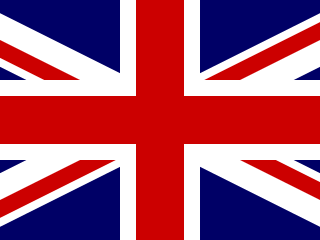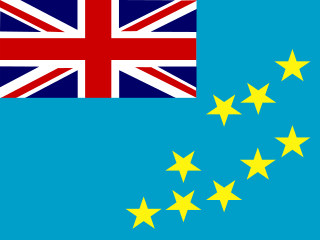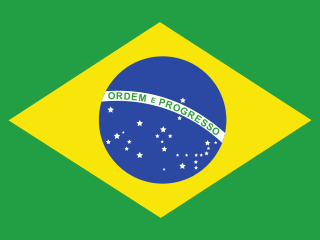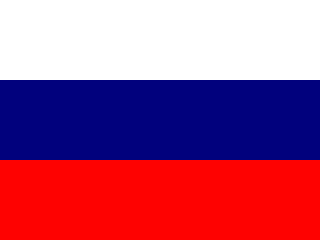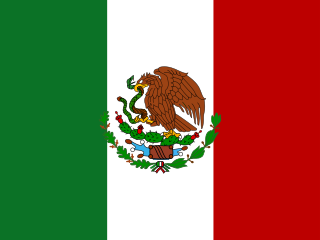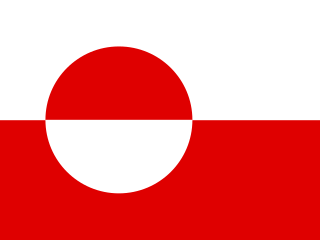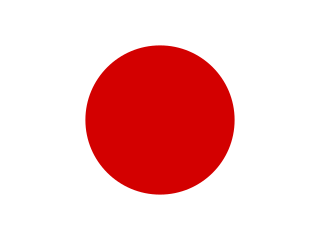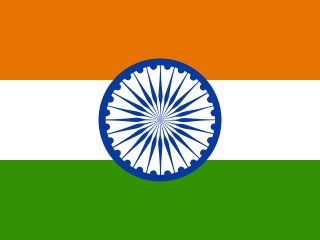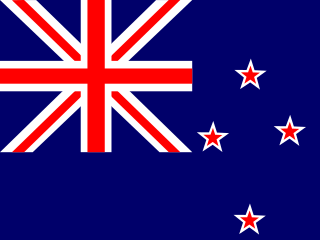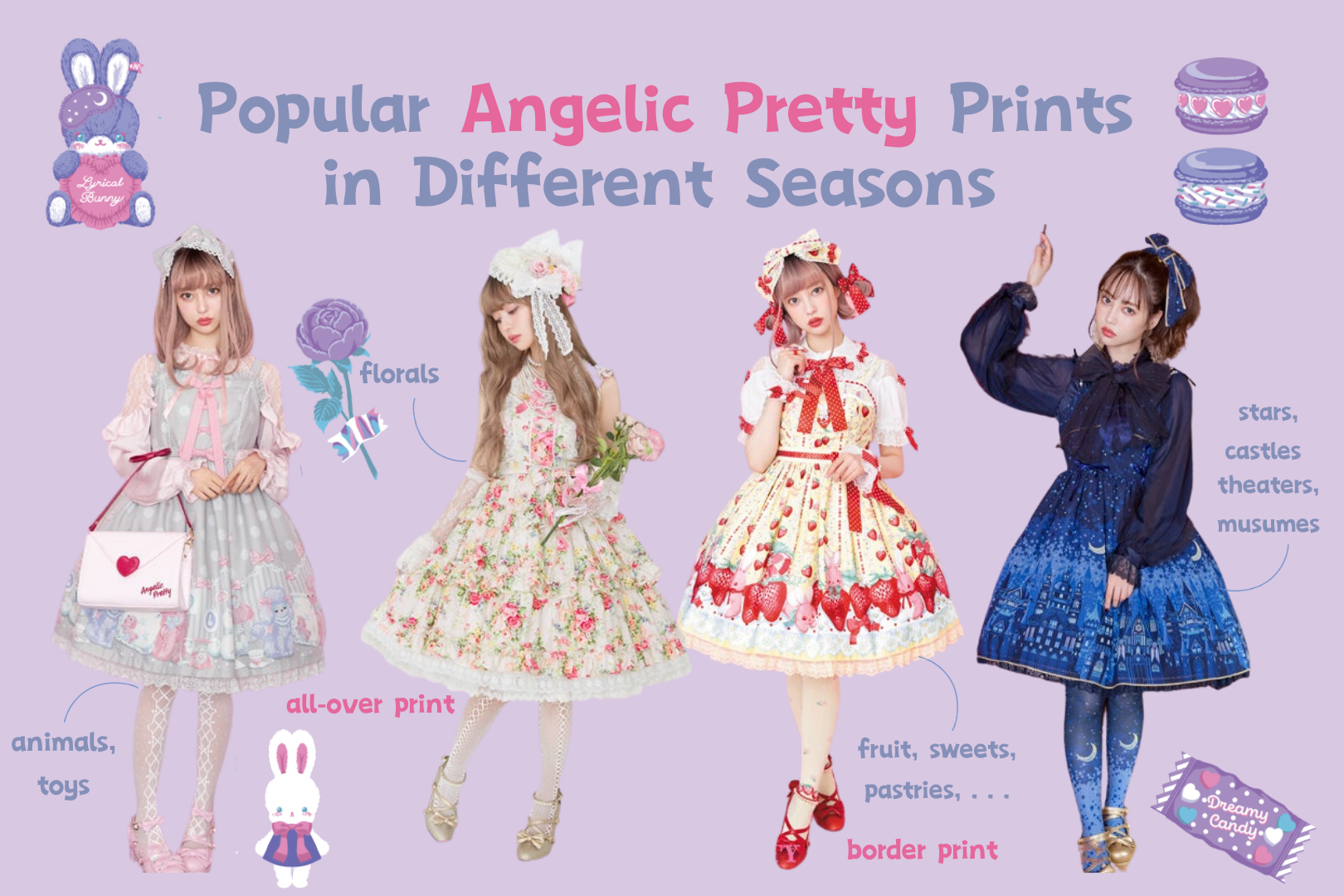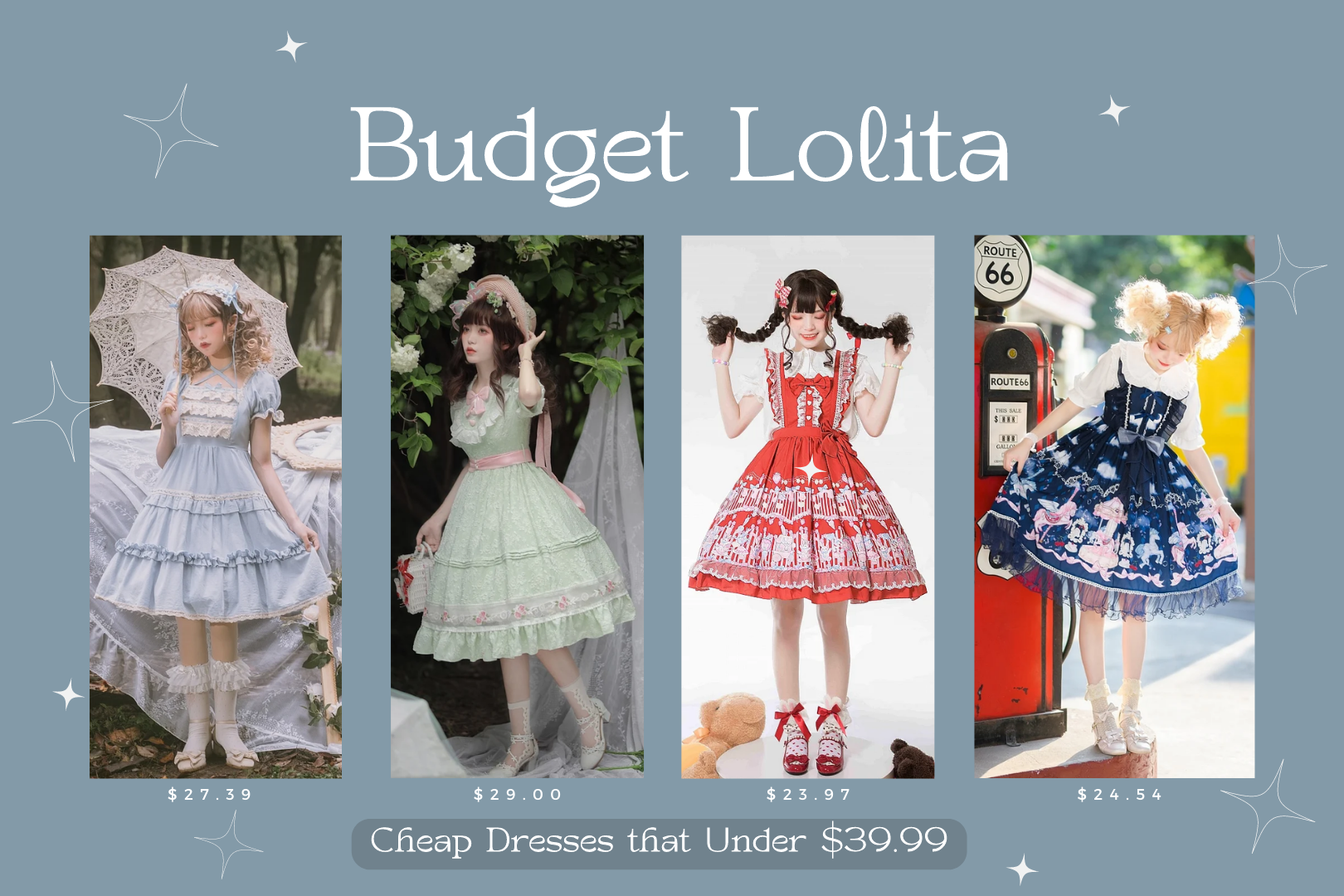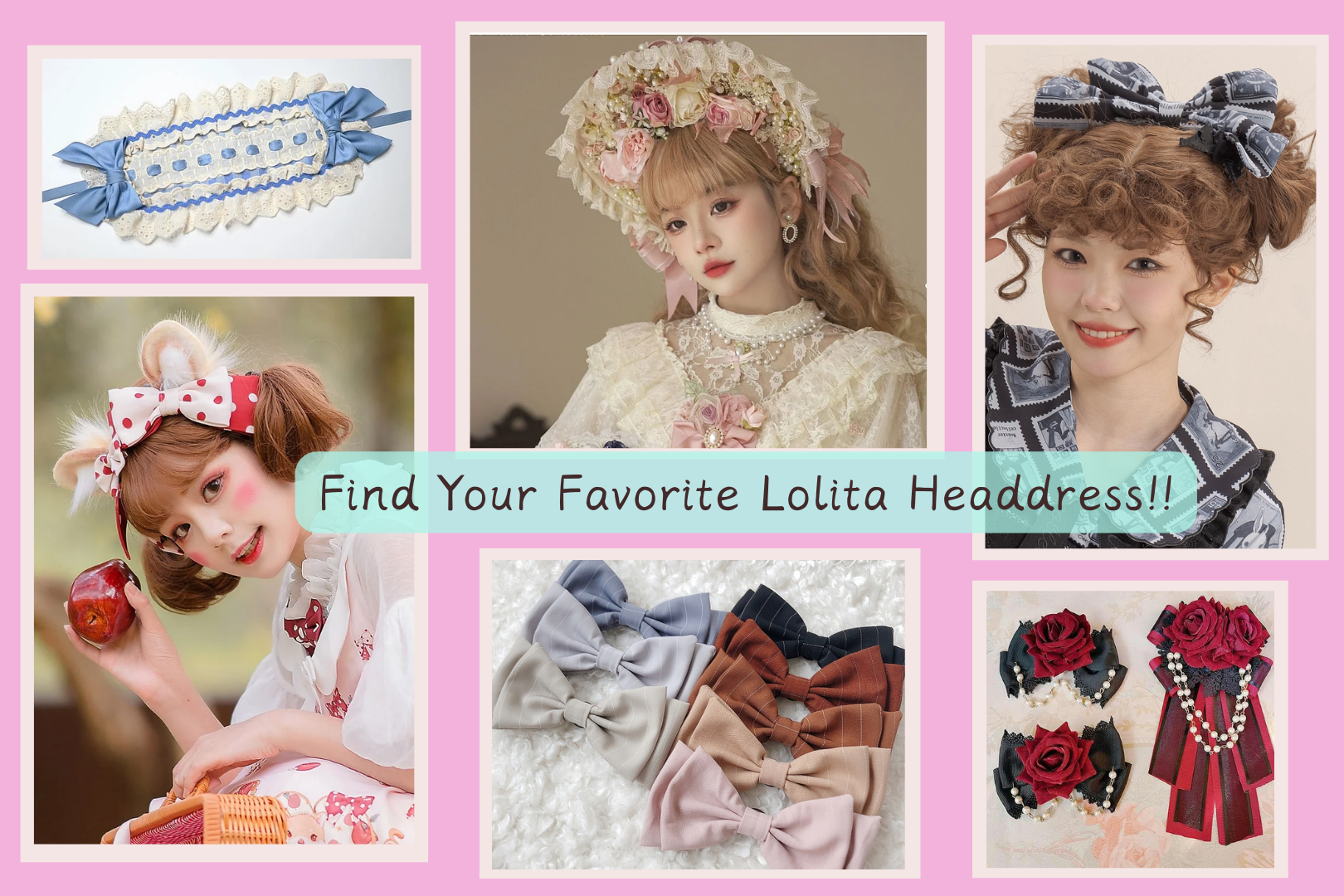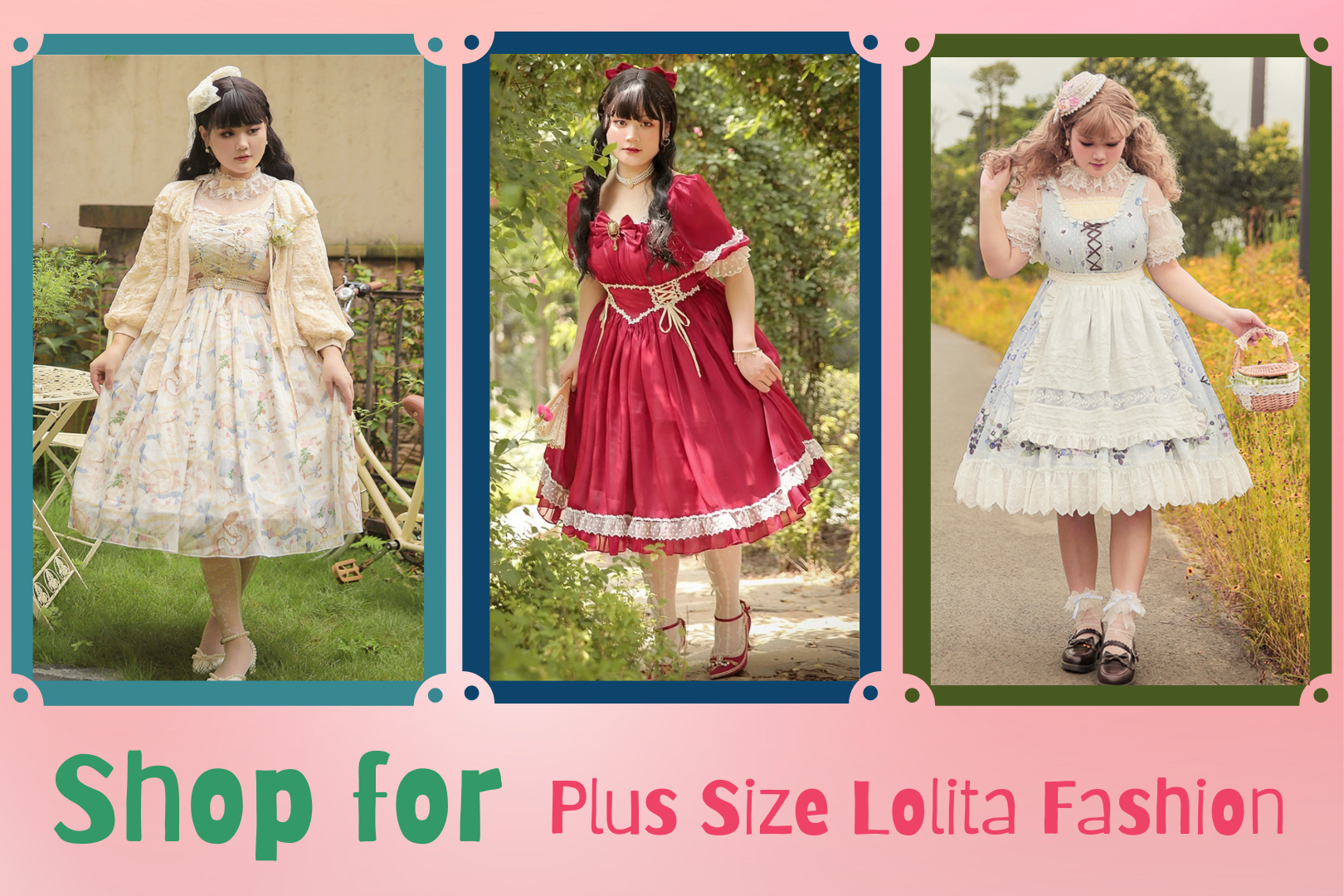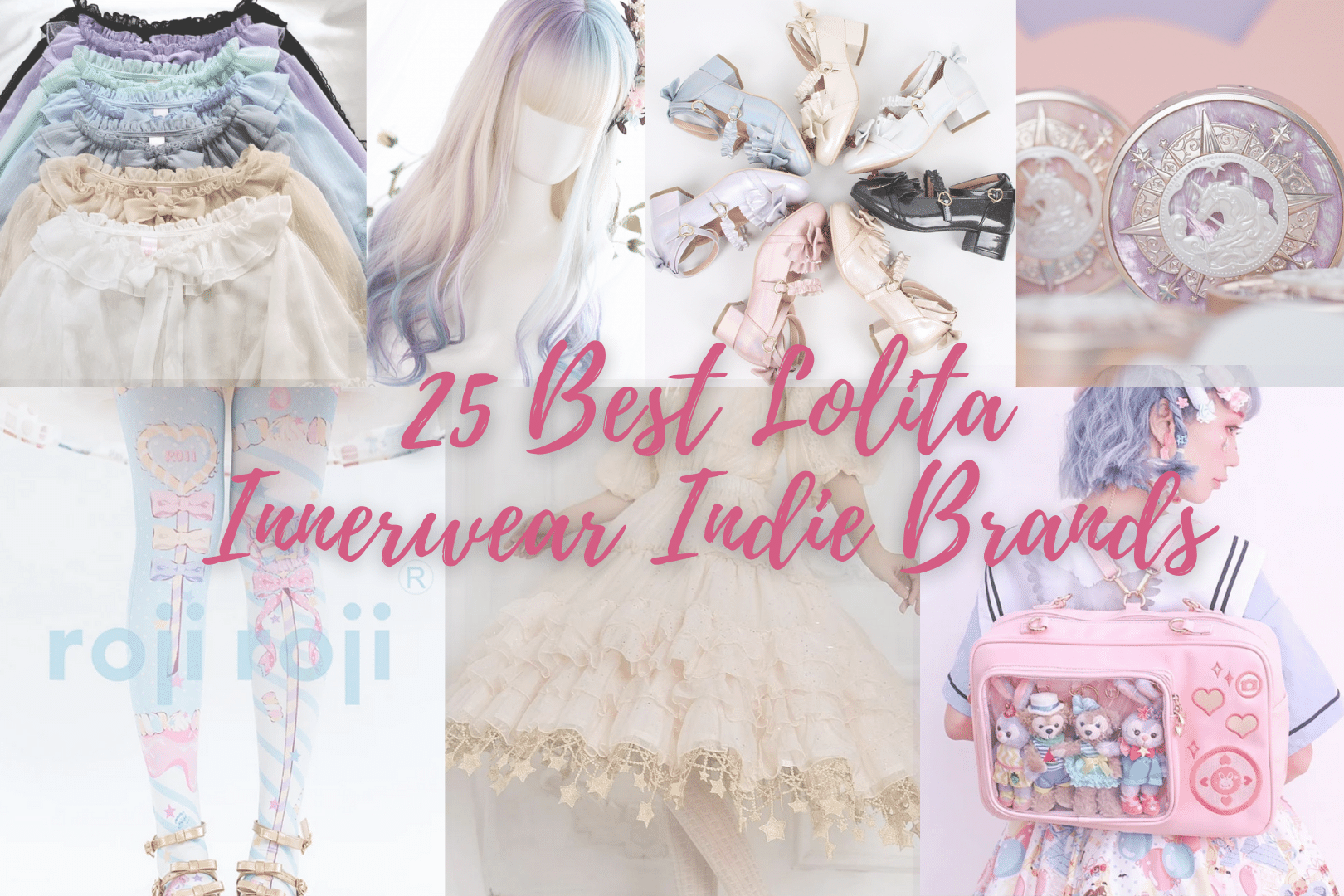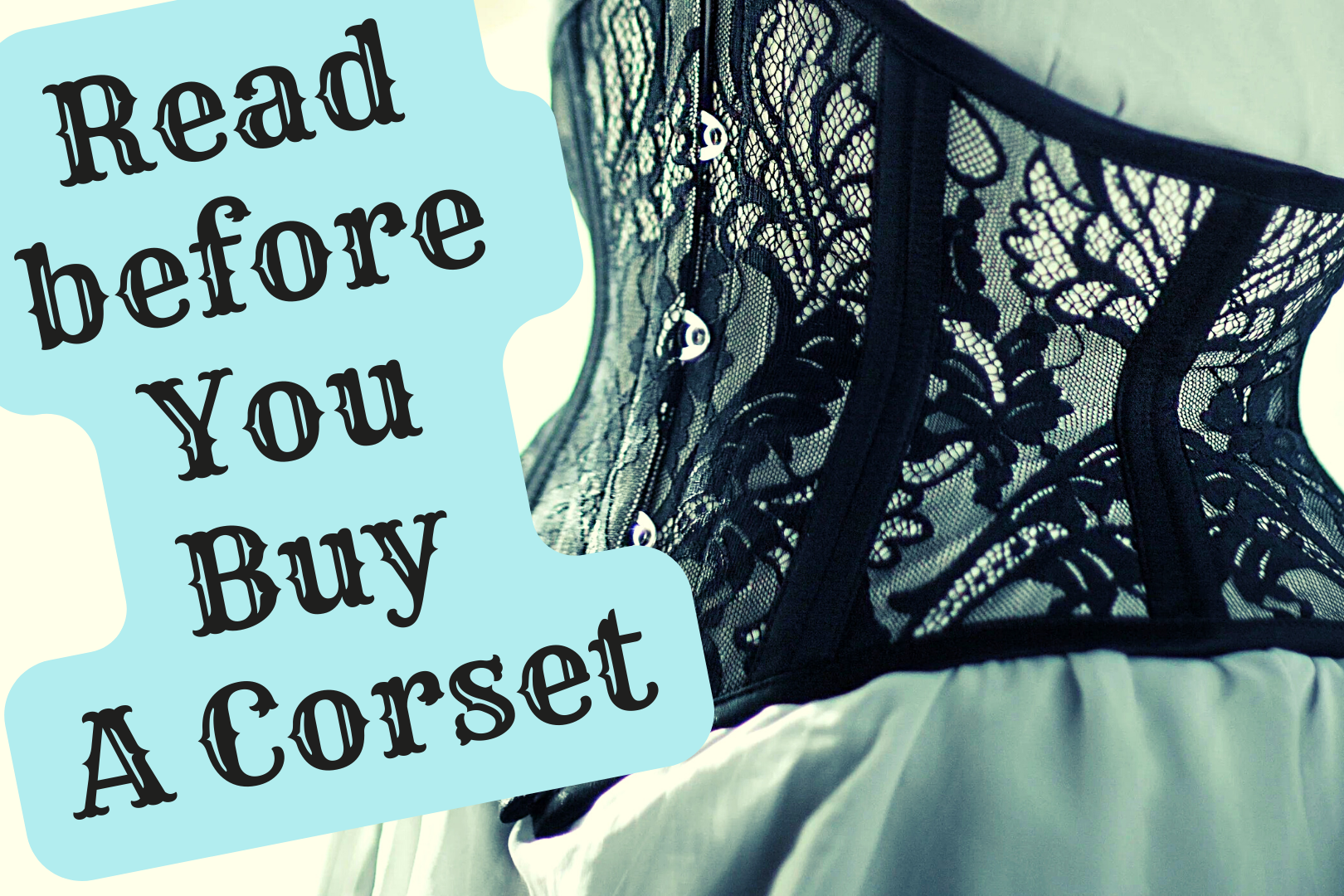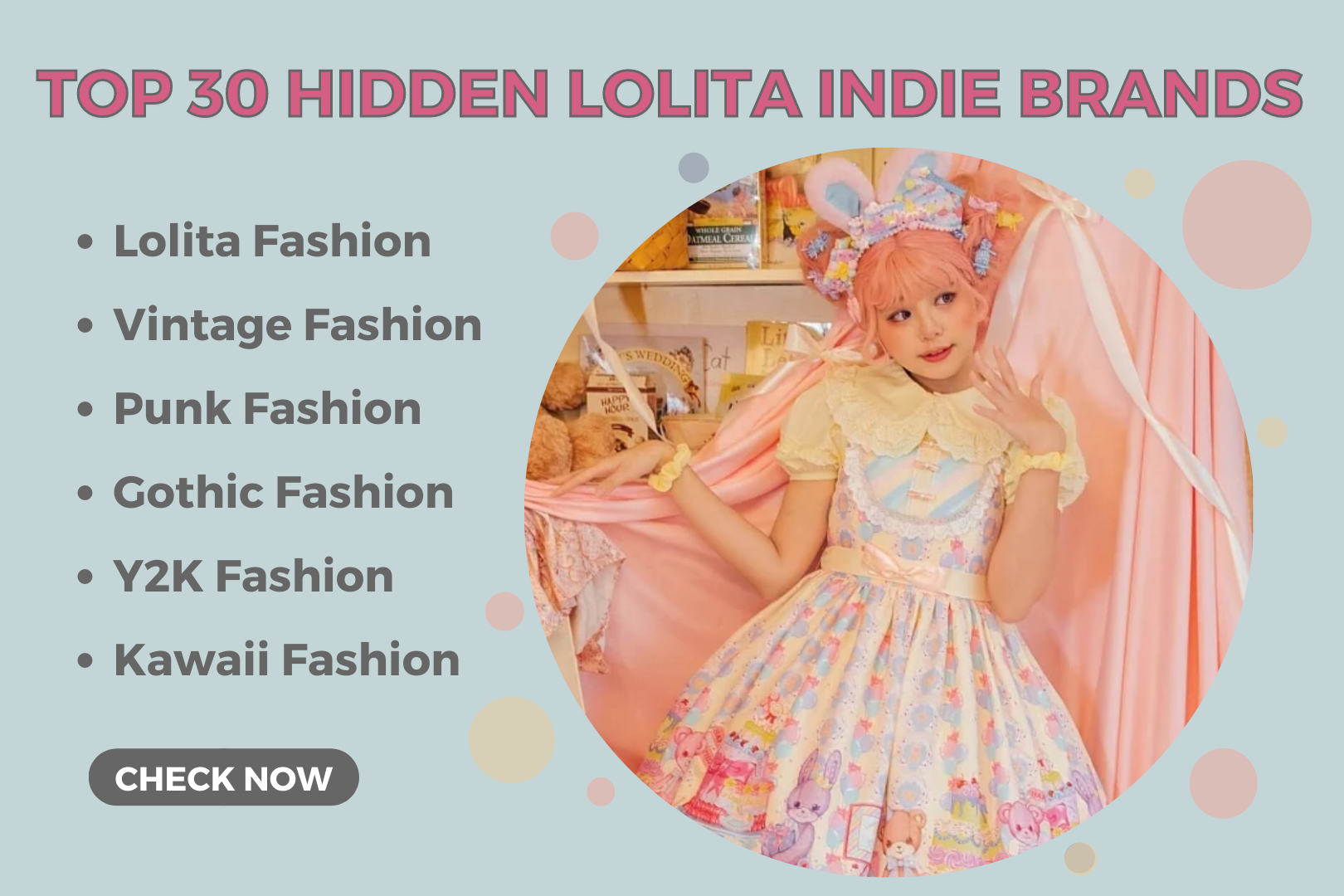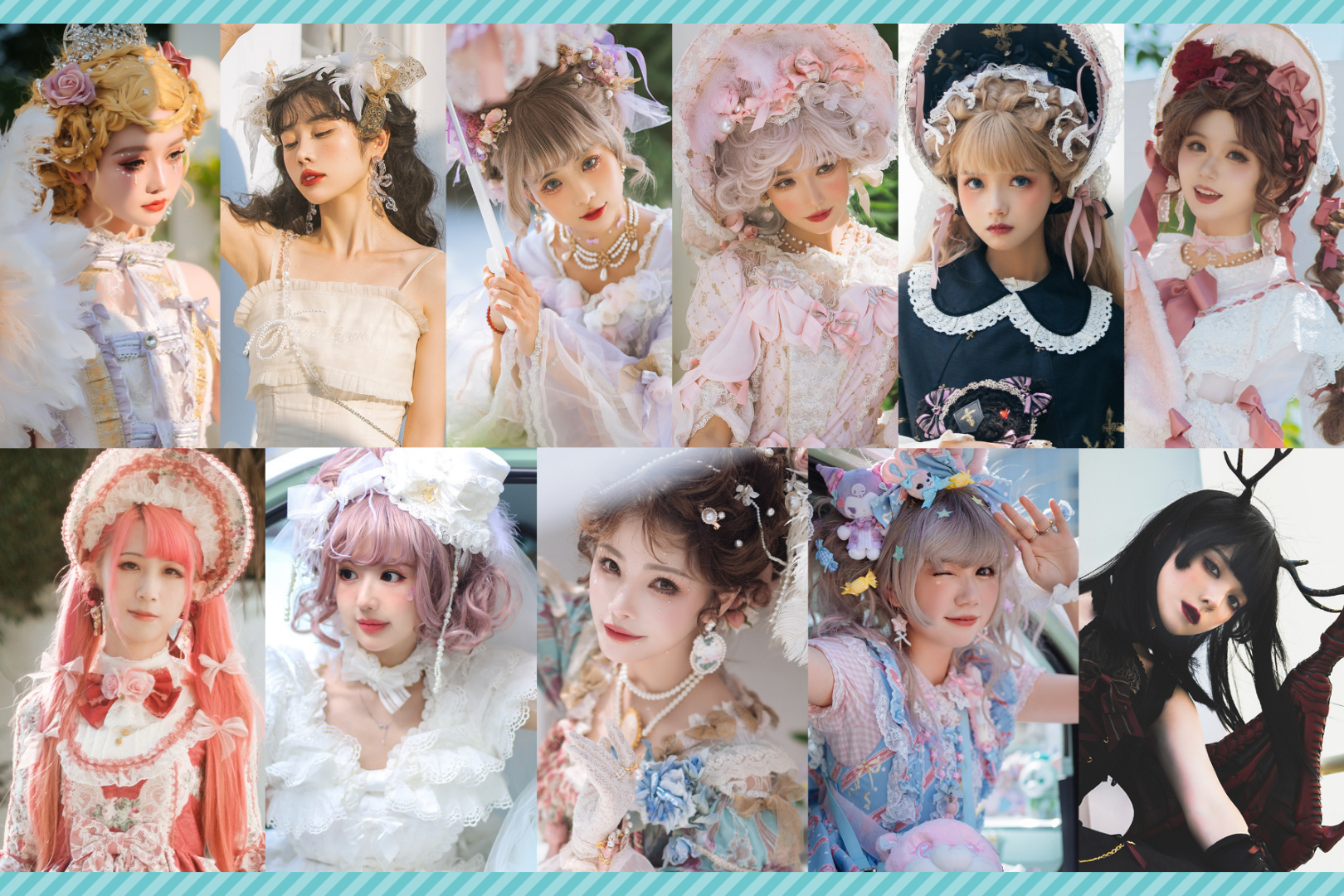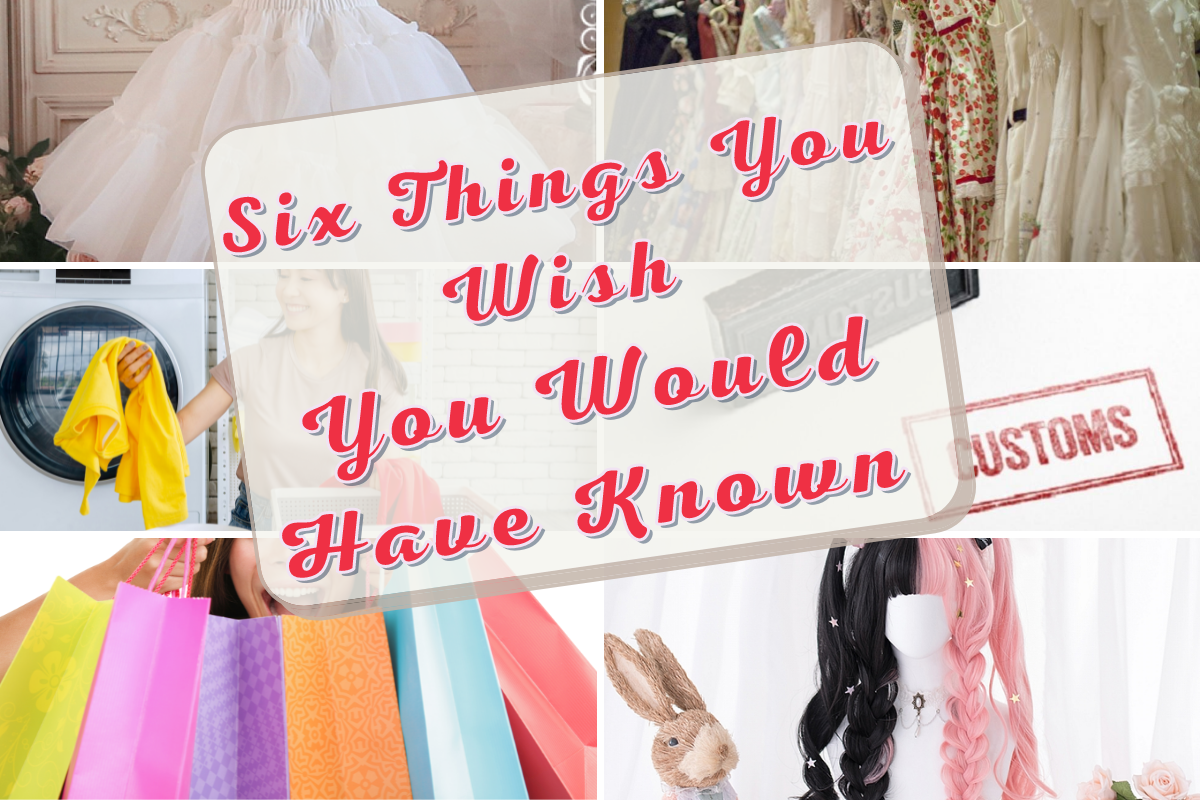
⚑ Lolita Fashion
▪ Lolita Fashion — A cute Japanese street fashion that was inspired by Victorian or Rococo clothing. The main goal is to cover a lot of bodies with aesthetic cuteness.
*Lolita Fashion has nothing to do with the novel Lolita written by Vladimir Nabokov. It's just a terrible coincidence.*
▪ Blog: What is Lolita Fashion? V.S. What Lolita Fashion is NOT
▪ Lolitas — Girls who wear Lolita Fashion
▪ Brolitas — Boys who wear Lolita Fashion. A term that combines "brother" and "lolita"
▪ Blog: What is a Brolita?
▪ loliable — "Lolita" and "usable". A term used when an item is not necessarily made for Lolita Fashion but can be used in coordination.
▪ Blog: Top 30 Hidden Lolita Indie Brands
▪ Lolita Substyles — Sweet Lolita, Classic Lolita, Gothic Lolita,
▪ Blog: Five Things You Should Know about Gothic Lolita
▪ Blog: 5 Coordinate Tips for Gothic Lolita Newbies
▪ Blog: 8 Recommended Vintage Lolita Coord Ideas for Classic Loli
Country Lolita, Old School Lolita,
▪ Blog: What is Country Lolita? 15 Chic Cottagecore Coord for Country Loli
▪ Blog: Old-school Lolita Collection
Hime Lolita (princess-like), Ouji Lolita(prince-like),
▪ Blog: 30 White Hime Lolita Dresses Collection
Qi Lolita (Chinese QiPao inspired), Han Lolita (Chinese Han Fu inspired), Wa Lolita (Japanese Kimono inspired),
▪ Blog: 9 Most Useful Common Knowledge About Wa Lolita
Shiro (white) Lolita, Kuro (black) Lolita,
▪ Blog: Kuro Lolita V.S. Shiro Lolita
Punk Lolita, Steampunk Lolita, Cyberpunk Lolita, Military Lolita,
▪ Blog: Punk Lolita, Cyberpunk Lolita, and Steampunk: Which one is your favorite?
Guro (injured) Lolita, Ero (erotic) Lolita, Deco Lolita (combined with Decora Kei),
Casual Lolita, Natural Lolita(combined with Mori Kei, also known as Mori Lolita), Nurse Lolita, Nun Lolita, etc.
▪ Blog: 50 Best Coordiantes for Nun Lolita
▪ Lolita Themes — They are more like a theme rather than a lolita substyle. Maid Lolita, Sailor Lolita, Pirate Lolita, Circus/Clown Lolita, Preppy Style Lolita, Empire Style Lolita, Witch Lolita, Idol Lolita, etc.
▪ Blog: Sailor Lolita V.S. Sailor Fuku Uniform
▪ Blog: Maid Outfit ╳ Lolita Fashion: Genuine Knowing of the Charm of Maid Lolita
▪ Blog: 10 Preppy Style Lolita Coordinate You Must Try
▪ Blog: 5 Tips to Help You Create A Clown Lolita Coord
▪ Blog: 12 Coord Ideas to Help You Put Together a Witch Lolita Outfit
▪ Blog: Empire Style Lolita Dresses, Low-profile, and Opulent
▪ Lolita Festival Themes — Festival Like Halloween, Christmas, Thanksgiving, Easter, Lunar New Year, International Lolita Day, etc.
▪ Blog: 10 Must-Try Lolita Themes for 2022 Halloween
▪ Blog: International Lolita Day 2022 - what exactly is it and how to celebrate it
▪ Blog: The 25 Best Easter Lolita Coordinates for 2022 Easter Meetups
▪ Blog: 13 Lolita Coordinates for 2022 Tiger Lunar New Year
▪ Blog: 2021 Christmas Lolita Outfits Collection From Devil Inspired
▪ EGL — Short for "Elegant Gothic Lolita". Coined by Japanese designer Mana.
| A quote from the website of Moi-meme-Moitie: The purity of a maiden, Gracefulness, loveliness, and cruelty Which are present within everyone A fashion that gives form to such memories, Frills and ribbons, an abundance of lace A fashion expressing innocent cuteness Quite like an antique doll while still retaining a sense of "poison" |
▪ EGA — Short for "Elegant Gothic Aristocrat". Coined by Japanese designer Mana.
| A quote from the website of Moi-meme-Moitie: "Both man and woman Neither man nor woman "hermaphroditism", "androgyny" Pursuing androgynous allure A fashion expressing dignified nobility and danger, Just like the word “Aristocrat” indicates Like a nobleman, like a noblewoman Like an angel, like a devil" |
▪ Mana — The most famous Lolita Fashion idol. Mana's fashion has a strong androgynous vibe. The designer and creator of the famous gothic Lolita brand Moi-même-Moitié. He coined "Elegant Gothic Lolita(EGL)" and "Elegant Gothic Aristocrat(EGA)" to define his fashion design.
Moi-meme-Moitie:
The brand name consists of the French words Moi – me, même – self, and Moitié – half. With the meaning of "One's alter ego as well as one's self", The term was coined by founder Mana.
▪ Aristocrat — Aristocrat is far more mature than Ouji Lolita and has a "Romantic Goth" vibe.
▪ Goth — Gothic
▪ Bittersweet — The black colorway of Sweet Lolita with Gothic influences.
▪ Shiro Lolita — Shiro(白) refers to "white" in Japanese. Shiro Lolita is a Lolita outfit made entirely of white clothing. In addition, completely cream-colored and off-white-colored lolita outfits are also accepted as Shiro Lolita. In general, Shiro Lolita refers to any all-white lolita outfits.
▪ Kuro Lolita — Kuro(黒) refers to "black" in Japanese. Kuro Lolita is a Lolita outfit made entirely of black clothing. No other colors are used in Kuro Lolita. So, Kuro Lolita refers to any all-black lolita dress and uses all-black coordinates. It can also be considered as a micro-style by an extension of Gothic Lolita. Not all Gothic Lolita is all-black but an all-black outfit is definitely a Kuro Lolita.
▪ Old-school Lolita — The original version of fashion. It consists of cute, girly dresses made of plain, natural-toned fabrics (usually cotton) and lace. The focus of this style is the way that basic colors and lace are combined. They can be coordinated with different materials to obtain different feminine looks in different shapes. It is a typical and timeless Lolita style.
▪ Kamikaze Girls (下妻物语) — A Japanese movie in 2004. Since this movie, Old School Lolita became popular in Japan. Japanese girls copied the costume of Momoko, the girl who loved Lolita costumes in this movie, wearing simple and lovely cotton Lolita costumes with a strong French Rococo style.
▪ Rococo — An 18th-century art. Often referred to as "late Baroque" in the past. Lolita dresses sometimes take inspiration from this era. The term is often thrown around in the Lolita Fashion because Momoko from the movie Kamikaze Girls was obsessed with the era. Rococo is not a Lolita style.
▪ Baroque — Flourished in Europe from the early 17th century until the 1740s. It followed Renaissance art and Mannerism and preceded Rococo and Neoclassical styles. The Baroque style used contrast, movement, exuberant detail, deep color, magnificence, and surprise to achieve a sense of awe.
The style began at the start of the 17th century in Rome, then spread rapidly to other European countries. By the 1730s, it had evolved into an even more striking style, called Rococo, which appeared in France and Central Europe until the mid to late 18th century.
This is also a Lolita brand called Baroque that produced antique dresses kissed by darkness, mixing muted tones with a classic style.
In general, Classic Lolita dresses or vintage Victorian lolita dresses often take inspiration from Rococo or Baroque.
▪ Empire Style — The Empire style was a popular style of women's clothing during the First French Empire under Napoleon, mainly popular around 1795-1829. Empire Style originated from neo-classical fashion and was a variation of the loose gowns worn by women in the Greco-Roman time.
Empire style is a part of the natural elegance of Classic Lolita.
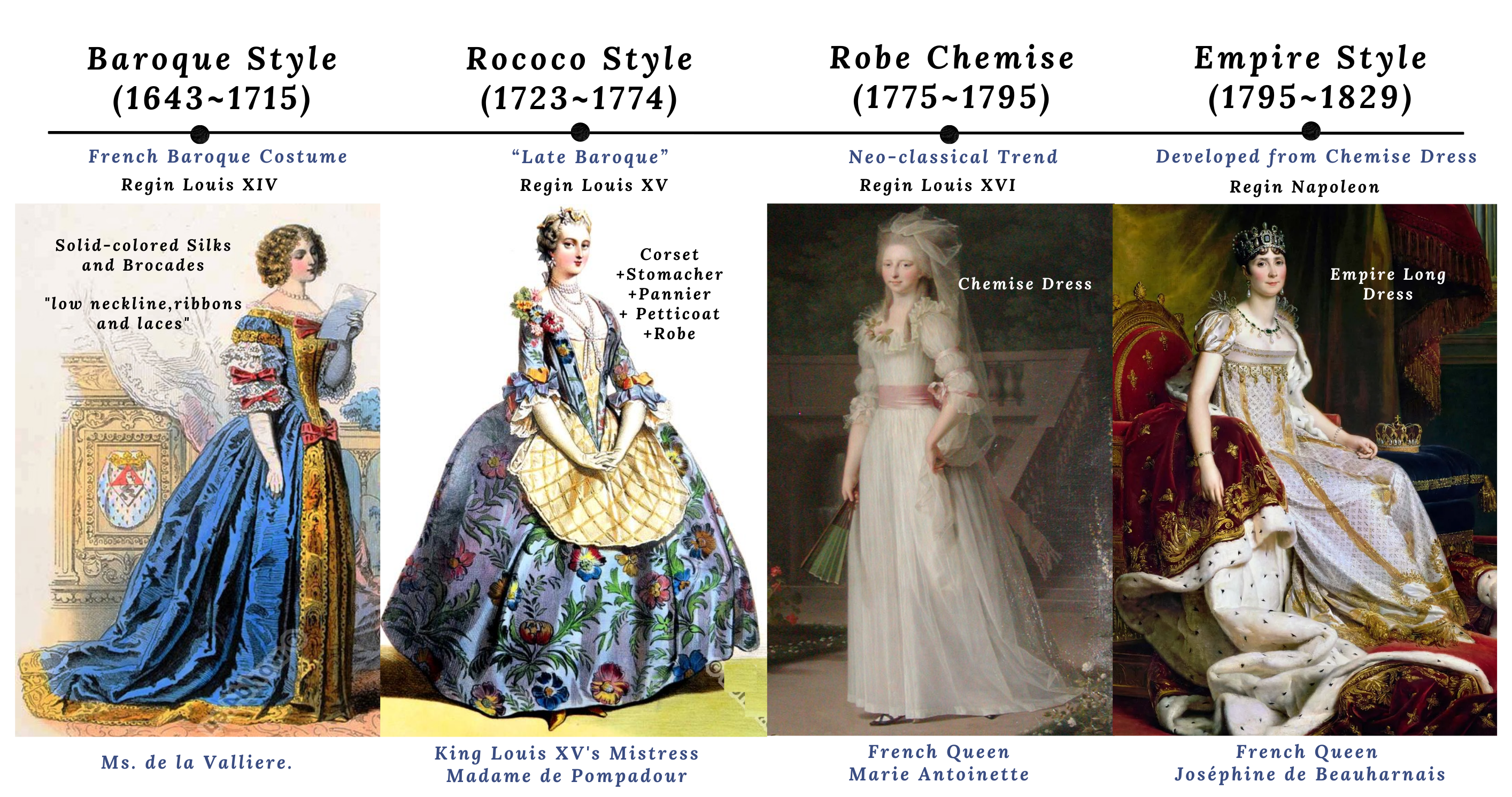
▪ Hime Lolita — A Lolita style that emphasizes a princess-like appearance, which is frequently overdone. It has a similar appearance to Classic Lolita, but it borrows many decorative elements from Sweet Lolita. It's gorgeous and dreamy and exists for important events such as weddings, coming-of-age ceremonies, and some thematic tea parties.
▪ Hanayome — Hanayome (花嫁) means "bride" in Japanese. Commonly used to refer to the gorgeous white hime lolita dresses.
▪ Hanamaru — Hanamaru (花丸) means "flower balls" in Japanese. Refer to "flower ball hair clips".
▪ Ouji Lolita — Ouji(王子) means "prince" in Japanese. Ouji Lolita refers to a cool prince-style Lolita outfit and is also called Kodona Fashion. This boystyle lolita fashion is inspired by Victorian-era clothing worn by young boys. Also known as Kodona(boystyle) Lolita.
An Ouji outfit often includes a vest, a shirt, and a pair of shorts, sometimes with a cool jacket.
▪ Kodona — A term that combines "Kodomo(child)" and"Otomo(adult)". It means "being at puberty age who is neither quite adult nor child" which was first brought up by band member Ryutaro to describe his personal style. Kodona Fashion refers to a style similar to what victorian boys wore. Including masculine blouses and shirts, knickerbockers, short trousers, knee-high socks, top hats, and newsboy caps. This is also what some girls use when they don't want to dress up like a victorian doll'.
▪ Lace Monster — Used when a dress or skirt with a very large amount of cheap, poor-quality lace.
▪ Lace Types in Lolita Fashion — High-quality laces are commonly used in Lolita Fashion brands, which are soft, thick, lacks shine, and doesn't fray. Common lace types used by brands are Torchon, Raschel, Cluny, Venise, cotton, chemical, eyelet, and tulle lace.
▪ Ita Lolita — Ita(痛) means "painful" in Japanese. Also known as Poor Lolita. Used when the outfits do not follow a proper lolita fashion anatomy or are of poor quality.
▪ Ita Lolita Bags — Cute bags that are not "loliable" enough. Usually paired with Kawaii outfits like JK uniforms.
▪ Shirring — a form of gathering, used to create unique shapes that will fit bigger-sized ladies.
▪ Pintucks — A old-fashioned way of sewing that sews very narrow tucks. Used to shorten a finished garment so that it can be lengthened. Also used as a decorative element in Lolita Fashion.
▪ 2XL/3XL/4XL — Chinese plus sizes. Sizing goes SS (extra small), S (small), M (medium), L (large), XXL or 2XL (Extra Large), 3XL (XXXL), 4L (XXXXL), etc.
▪ Plus-size — A US 18 is considered plus-sized while a Chinese size 3XL(equal to a US 14) is considered plus-size. Chinese Size 2XL is generally equal to a US 12 according to the clothing size charts below.
▪ Blog: Six Proper Steps to Shop for Plus Size Lolita Fashion
▪ Blog: Body Size Measuring Guide & Website Clothes Size Guide
▪ Custom Size Service — If you are in US 16 or over, the Custom Size service is highly recommended. There are plenty of indie brands that offer custom-size services on our websites. You can click Custom Size Collection to find items that offer custom-size services.
▪ Blog: Six Things You Wish You Would Have Known as a Lolita Fashion Beginner
▪ Blog: 25 Budget Lolita Dresses Under $39.9 for Lolita Newbies
▪ Coord — Short for "Coordinate/Coordination". You can use the term when referring to any lolita outfits you've put together.
▪ Floored — Another fun term in the Coord, which is when you lay your coordinate out on the floor or bed to plan it and probably take pictures for Instagram.
▪ Replica — An extra replica or model of something. It refers to a Lolita-brand dress that is a copy of the original.
▪ Tea Party —Various kinds of Lolita meet-ups/events. It's a fun way to interact with fellow Lolita Fashion enthusiasts, there is always a dress code and rules to follow, especially when it's an official tea party sponsored by a Lolita brand.
▪ Jacquard — Jacquard fabric refers to any type of pattern that is woven directly into the material, rather than embroidered, printed, or stamped onto the fabric. You see a lot of cotton jacquard in Lolita Fashion
▪ Sax — Comes from the term "Saxon blue", which is similar to light blue. A dye made by dissolving indigo in sulfuric acid.
▪ Milk Tea — The color of tea with milk added. A chic, creamy color. Like a warm beige
▪ fleur-de-lis — A lily that is used as a decorative design or symbol. The word "fleur" means "flower" and "lis" means "lily" in French.
▪ OP — Short for "One-piece", a one-piece lolita dress with sleeves.
▪ JSK — "Jumperskirt", a sleeveless dress with straps. Usually paired with a blouse underneath.
▪ SK — Short for "skirt"。
▪ Salopette — An overall dress with a bib and adjustable shoulder straps. It's more casual and less fitted than your typical lolita OPs and JSKs. It usually has a shorter skirt length and a longer bodice.
▪ Blog: Cute and Playful, 10 Salopettes(Overall Dresses) Every Lolita Should Try
▪ Full Set — Some indie brands will launch matching accessories along with the main pieces to achieve a cohesive style. A full set normally consists of a dress(JSK/OP/SK), and other matching items such as a KC(head bow), hair clips, hats, wrist cuffs, bow tails, a blouse/shirt/cutsew, a cape, a girdle, an apron, and so on. The content of a full set will be listed in the description of the items on our site.
▪ Hi-lo — Short for "High and Low" A hi-lo dress has a high skirt length on the front and a low skirt length on the back.
▪ Petticoat — Used under dresses/skirts to gain the poofy Lolita silhouette. There are mainly two types of petticoats: Tulle petticoats and Fishbone petticoats.
▪ Blog: All Things about How to Choose the Most Suitable Lolita Petticoat
▪ Tulle/Organza Petticoat — Tulle petticoat achieves shape by layers that are usually made of tulle and organdy.
Pros:
1. Easy to store.
2. Help us keep warm in cold weather because of their multi-layers
3. Soft and comfortable; suitable for everyday wear.
Cons:
1. Less support for particularly heavy skirts
2. Hot in summer, and we will feel uncomfortable when sticking to the sweating leg.
▪ Fishbone/Birdcage Petticoat — Fishbone/birdcage petticoats achieve the shape with fixed or adjustable wire rings.
Pros:
1. Better support for heavy skirt dresses.
2. Better for keeping the skirt in shape.
3. Larger in volume.
4. Much cooler for summer wear.
Cons:
1. Obvious strings around the skirt when wearing a fishbone petticoat without organza layers under a thin dress.
2. Pay more attention when sitting down.
Tips: Trying not to sit on the fish bones, it is awkward when sitting down on one side and the other side suddenly goes up.
▪ Bell-shaped Petticoat — Bell-shaped petticoats will make your skirt look like a bell or a cupcake (you can also call this shape cupcake).
▪ A-line Shaped Petticoat — A-line Shaped Petticoats will make your skirts look more like an A. And A-line Shaped Petticoats are More Often Chosen by Classic Lolitas.
The difference between them is that a cupcake petticoat's top is a little bit wider than A-line one.
▪ Pannier – Another word for the petticoat.
▪ Underskirt – Used under dresses/skirts to add details or extra length to the hem of your dress or skirt. An underskirt will not add the required volume like a petticoat. Usually are not suitable for wearing alone, but there are some indie brands that will make the design to be able to wear alone.
▪ Bloomers — Shorts designed to be worn with a petticoat, or under skirts. Lolitas use them for modesty or warmth sometimes. It should not be visible naturally, though there are exceptions to this.
▪ KC — Short for "Kachusha/Katyusha". A headband with a bow on it. A headpiece was first known as the Kachusha/Katyusha head bow in the Taisho period of Japan.
▪ Rectangle Headdress —Looks like a headband but needs to be tied under the chin. Usually a rectangular fabric with lace or ribbon decorations. Also called maxi pad headdresses which are usually used in Old School Lolita.
▪ Common Lolita Hair Accessories: head bows, headbands, hair clips, bonnets, straw hats, berets, hanamaru(flower ball hair clips), mini hats, and wigs.
▪ Blog: 15 Types of Headwear Every Lolita Must Have
- #Soft Hairband - Rectangle /Maxi Pad Headdress
- 1. Simple Lace Headdress
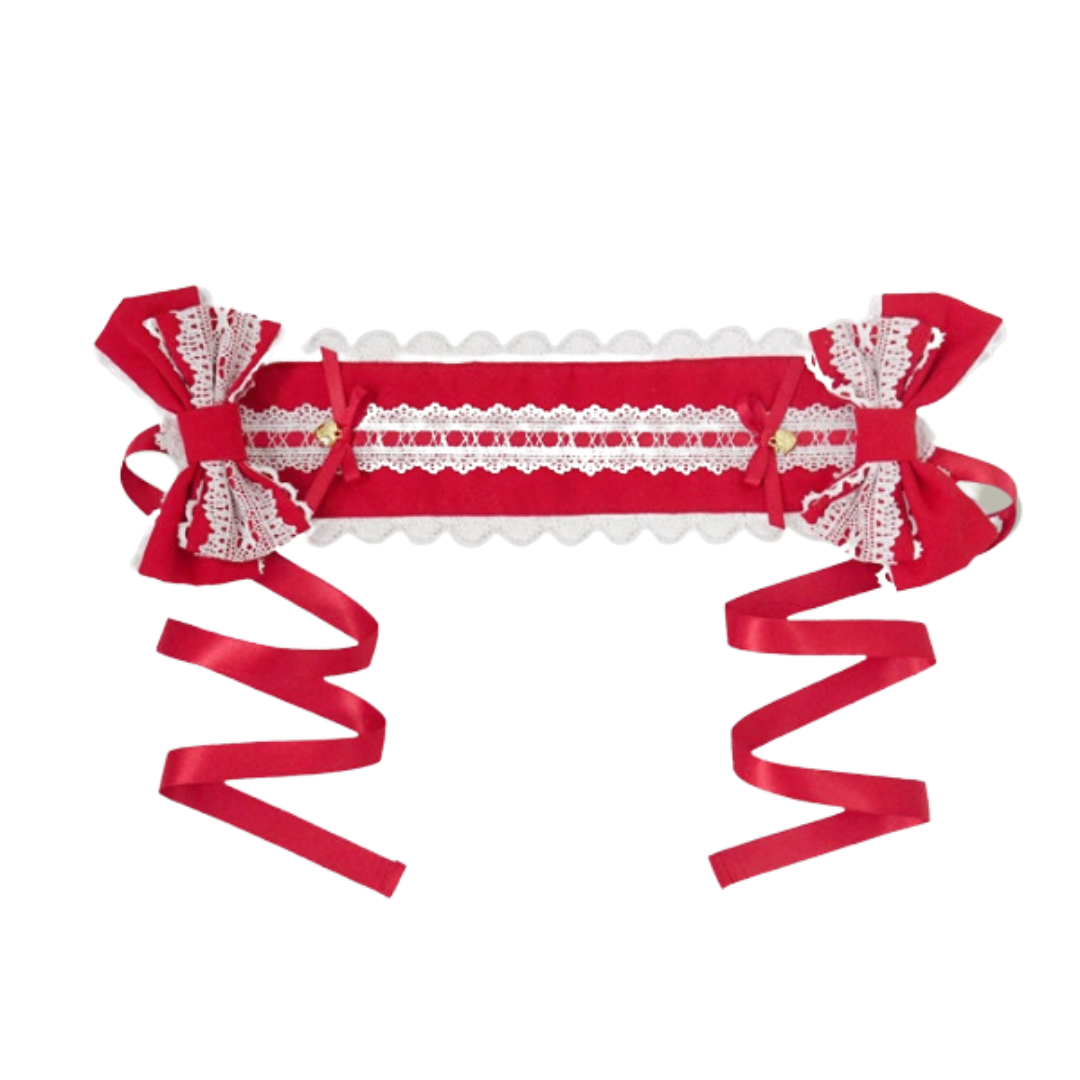
- 2. Lace-up Headdress
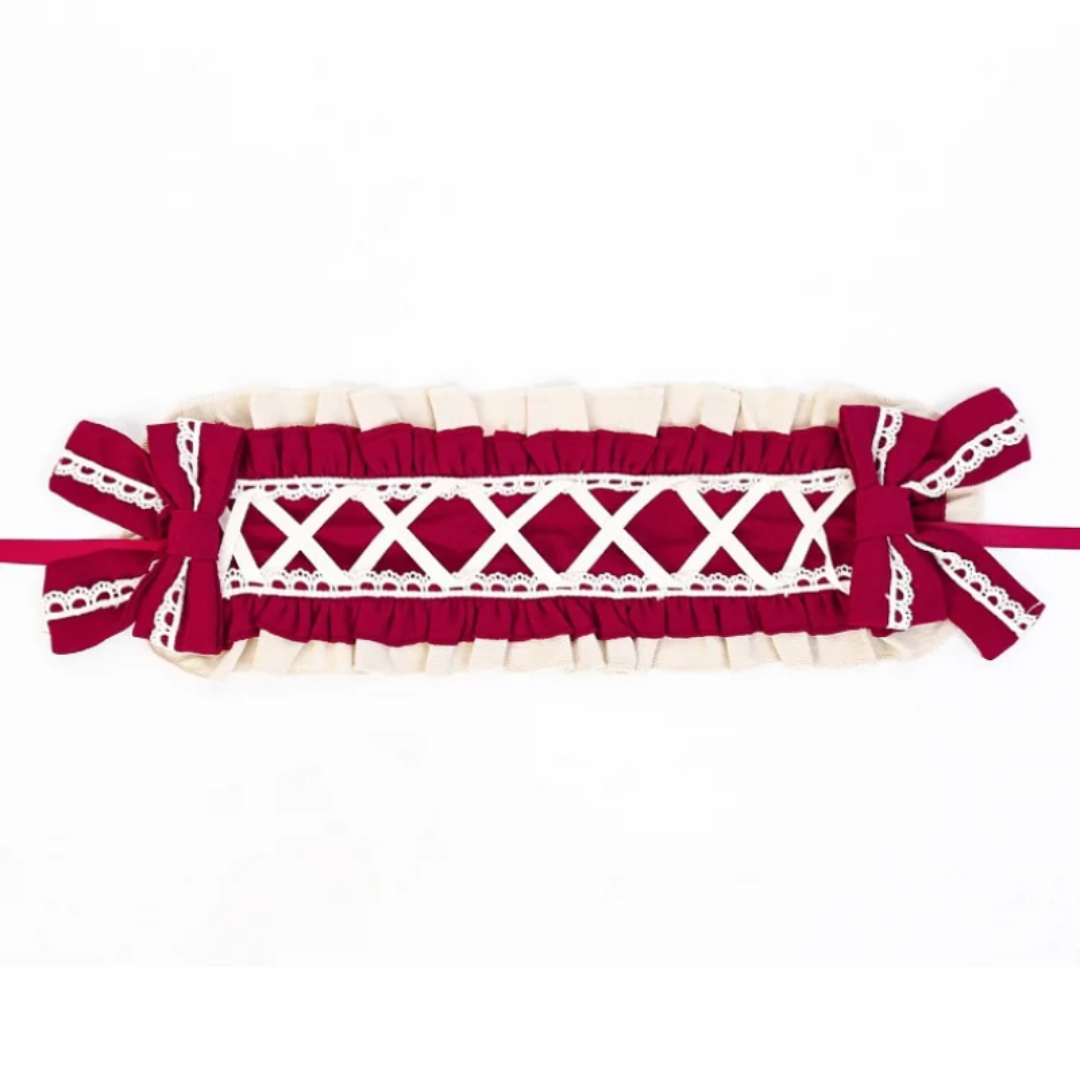
- 3. Frilled / Ruffle Headdress
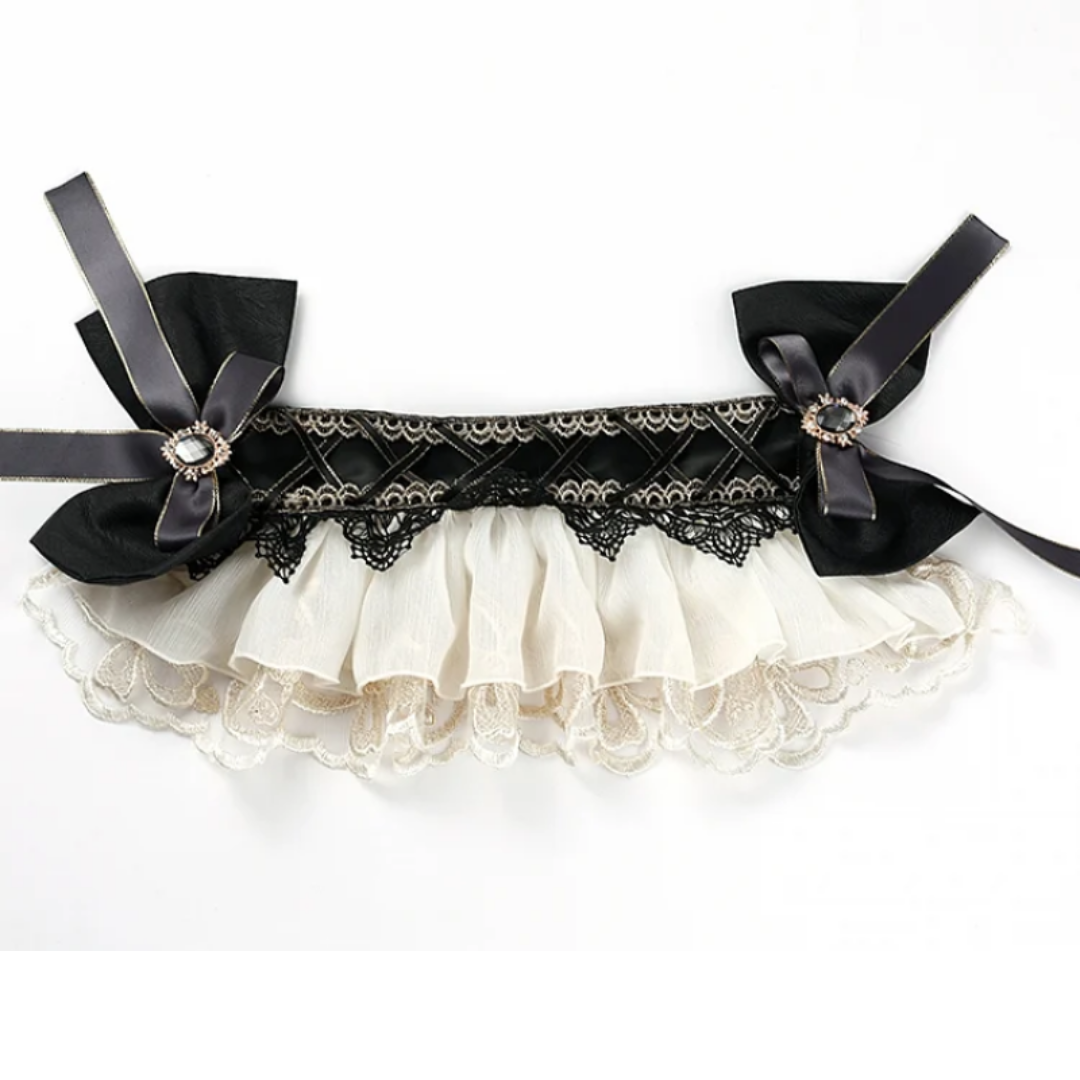
- 1. Simple Lace Headdress
- #Round Headdress / Canotier
- 4. Round Headdress
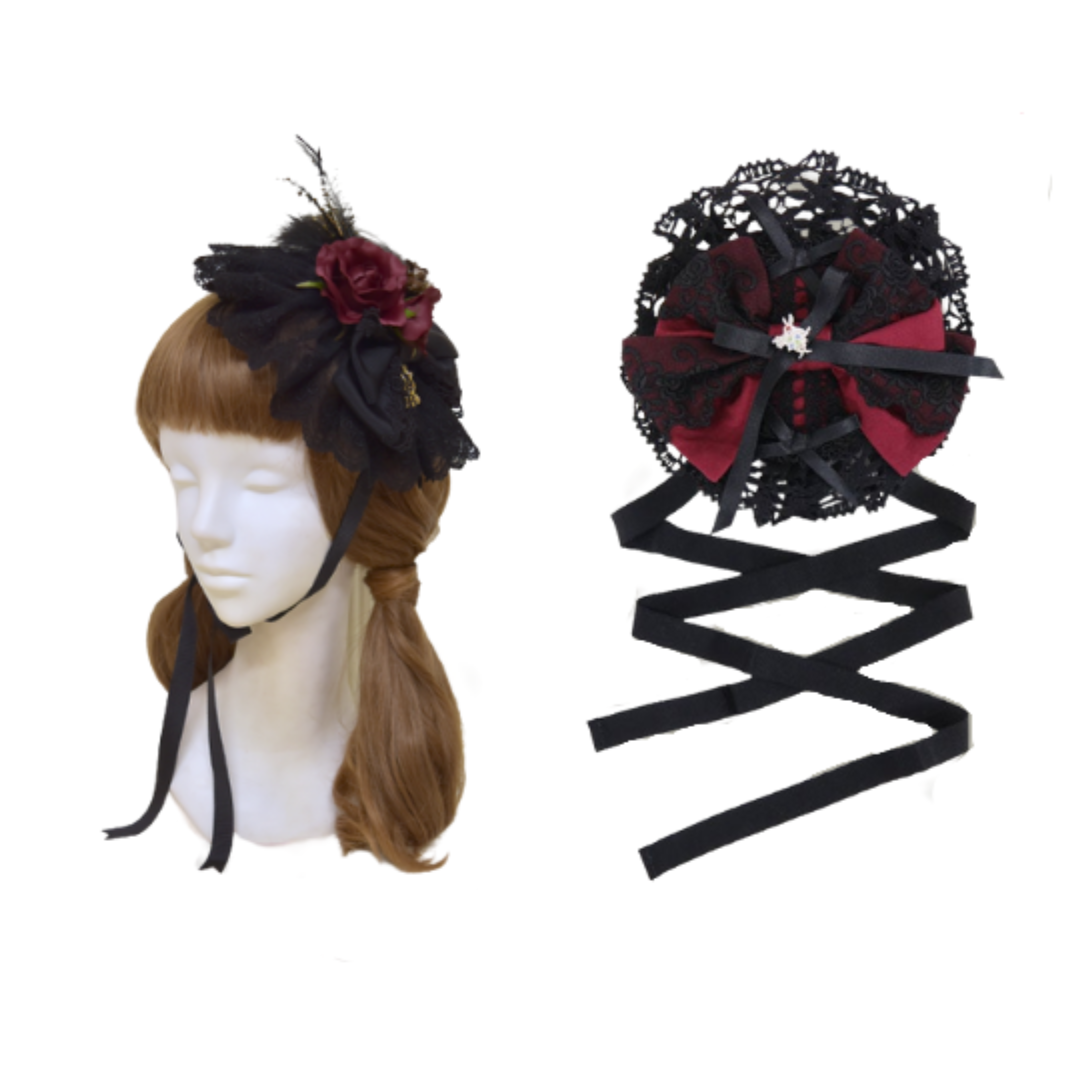
- 4. Round Headdress
- #Kachuusha(KC) - Head Bow
- 5. KC with Big Bow - Alice Band
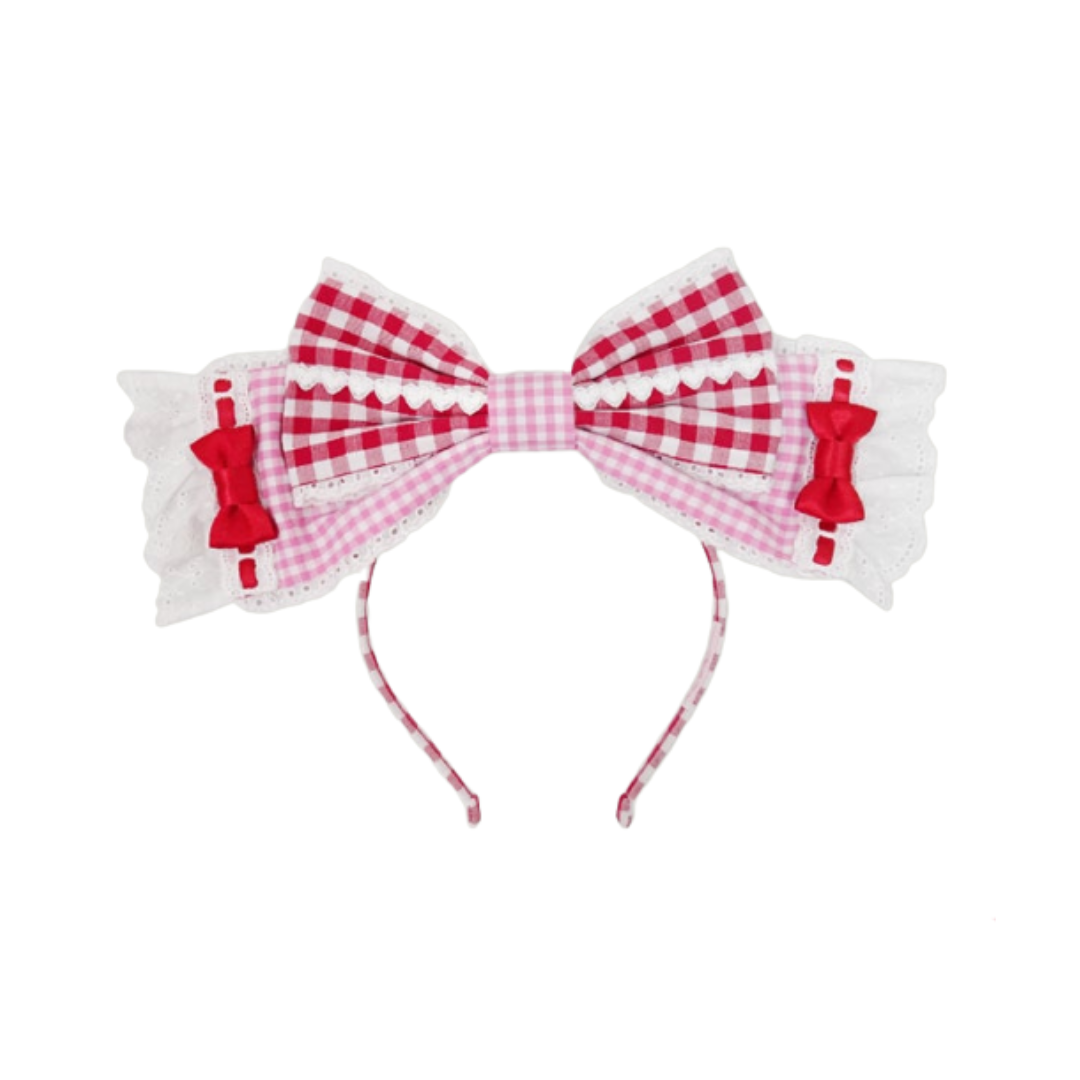
- 6. KC with One Side Bow - Side Head Bow
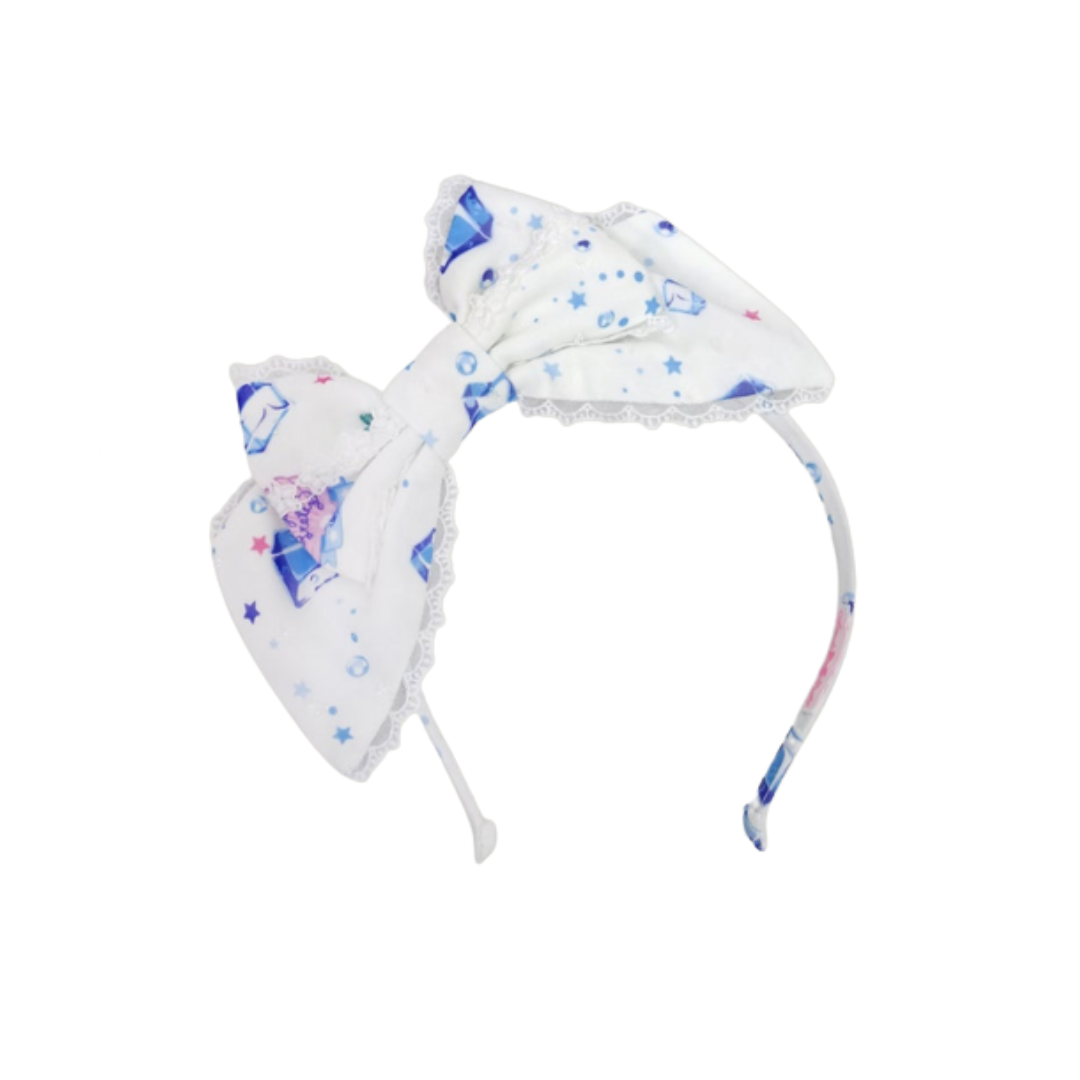
- 7. KC with Ruffles - Maid Head Bow
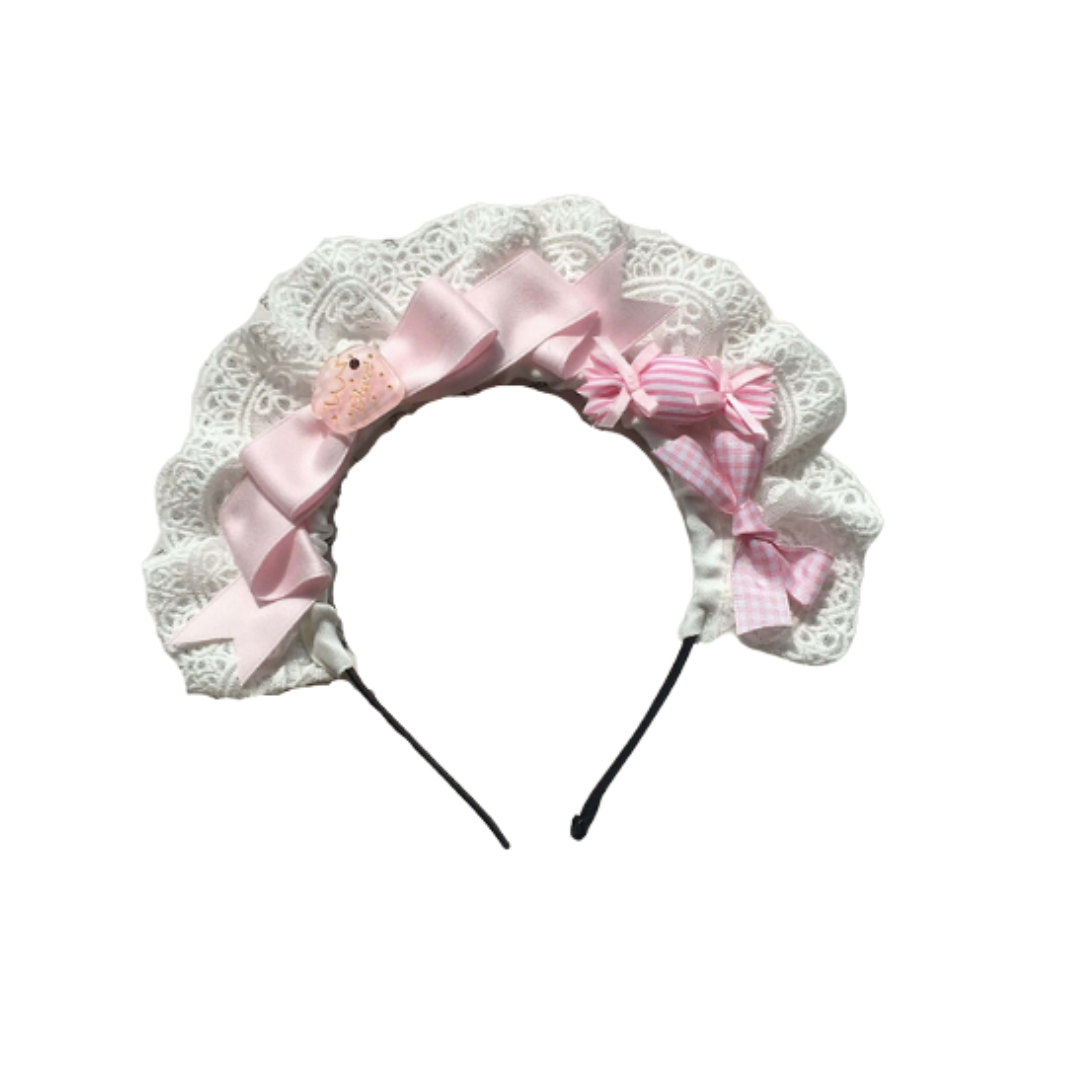
- 8. KC with Animal Ears
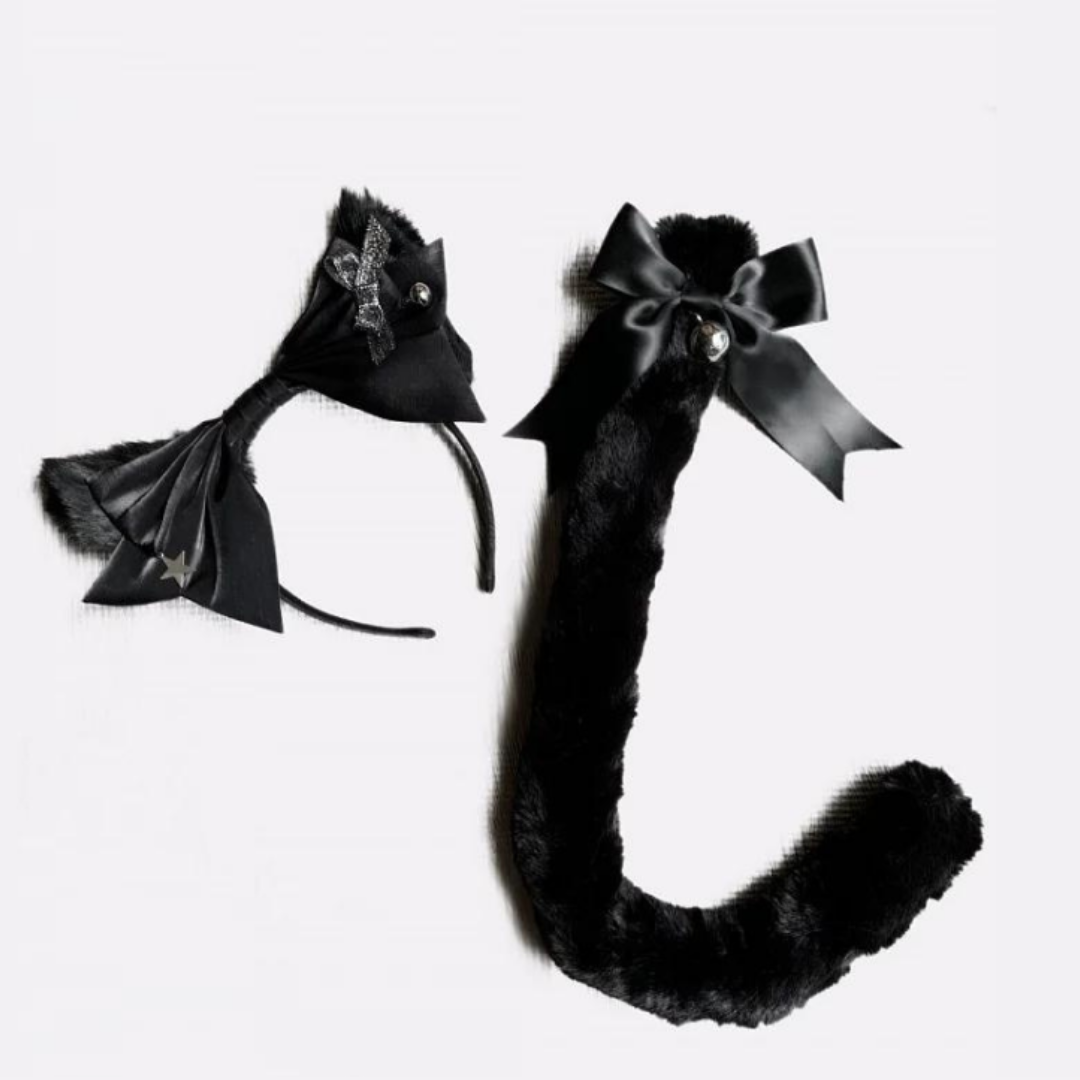
- 5. KC with Big Bow - Alice Band
- # Hairclips
- 9. Ribbon / Bow Clips
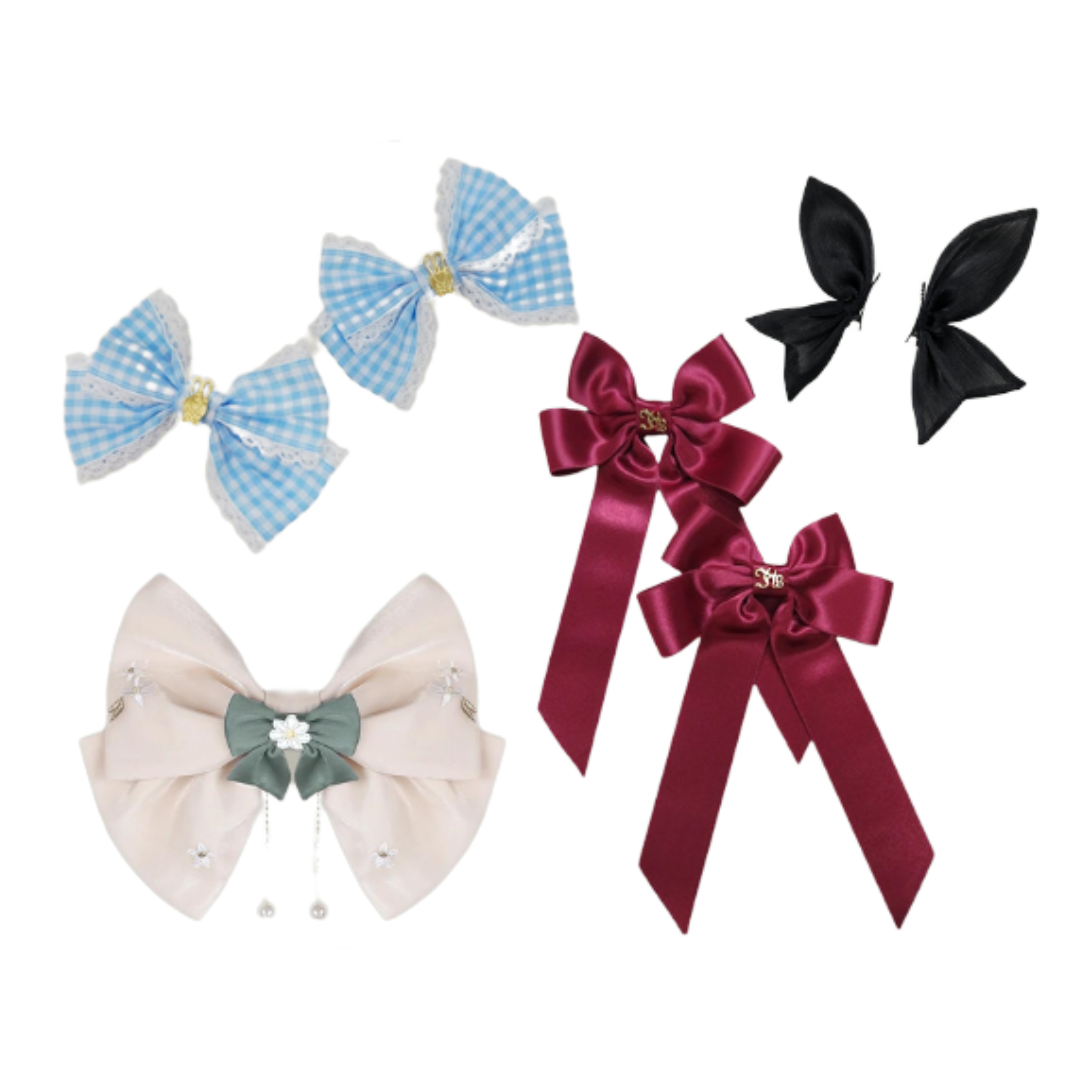
- 10. Flower Ball Clips (Hanamaru)
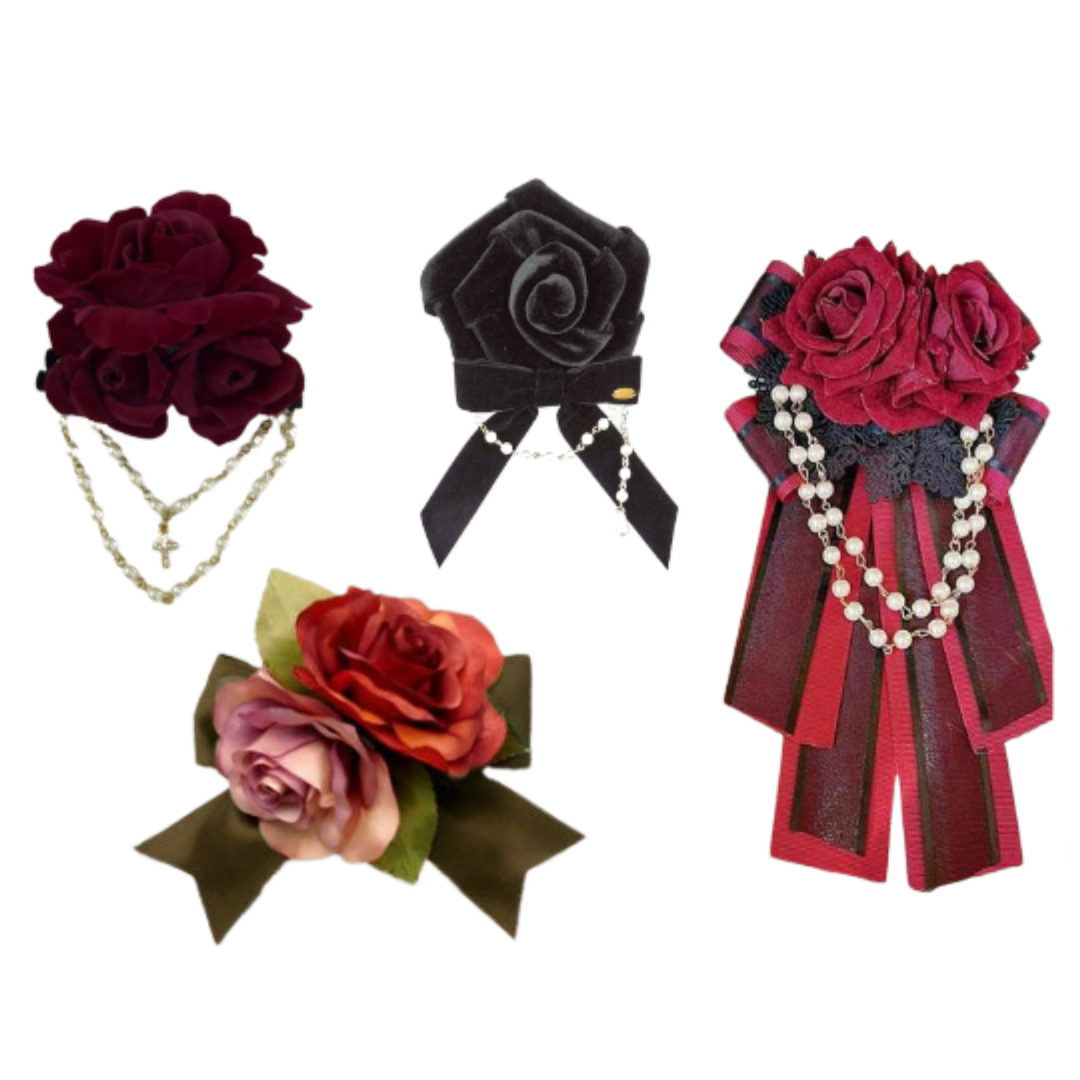
- 11. Animal Ear Clips
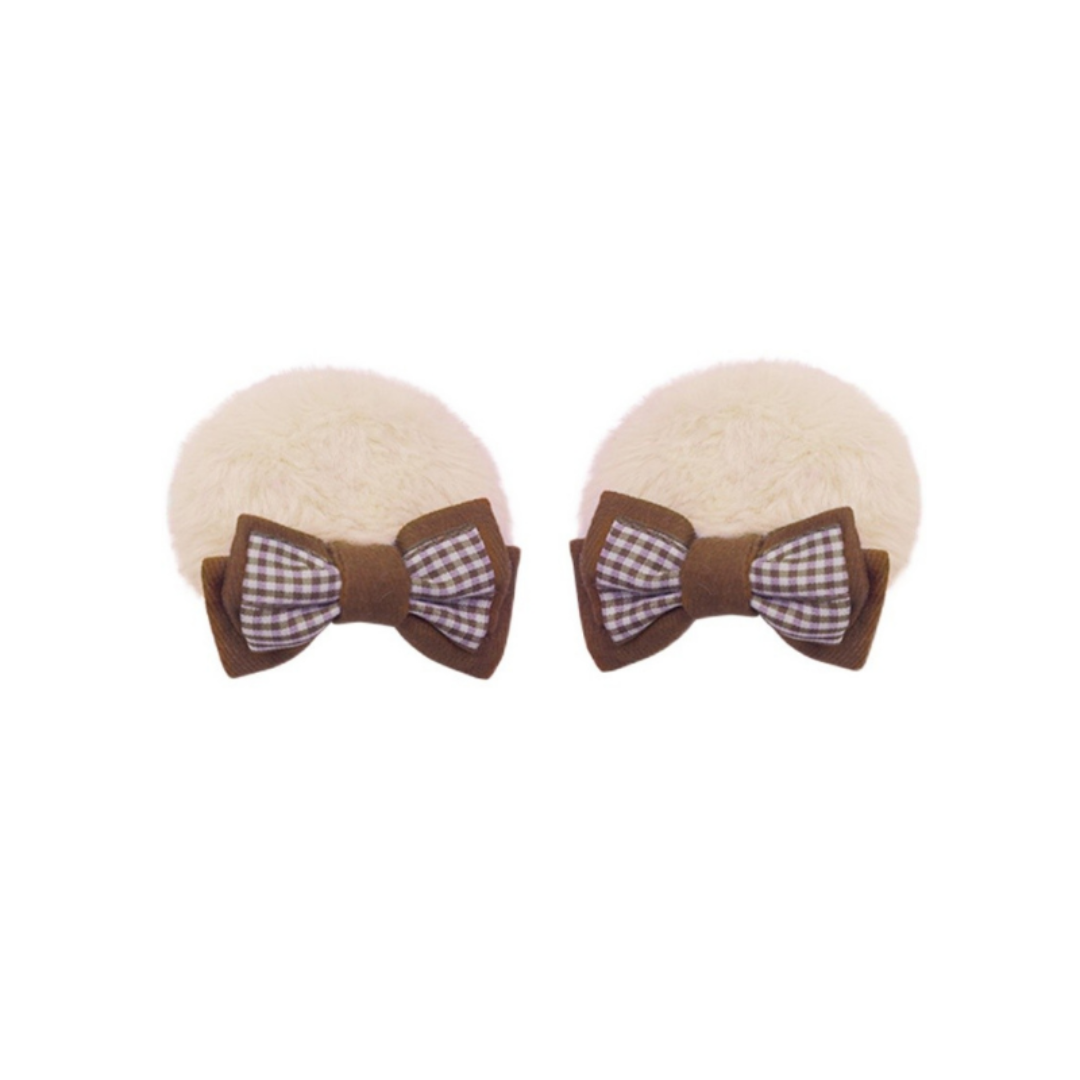
- 9. Ribbon / Bow Clips
- # Hats
- 12. Straw Hats
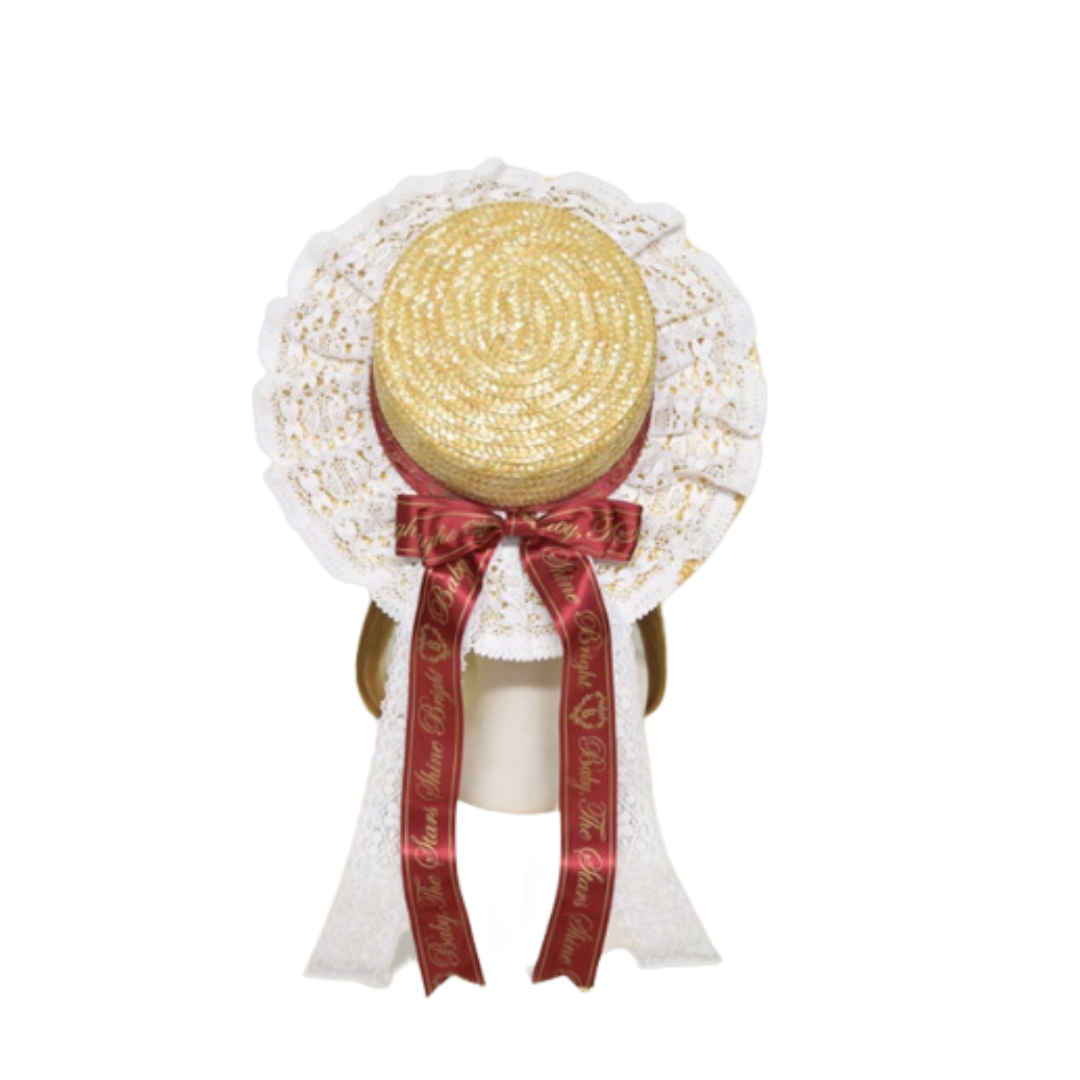
- 13. Bonnets
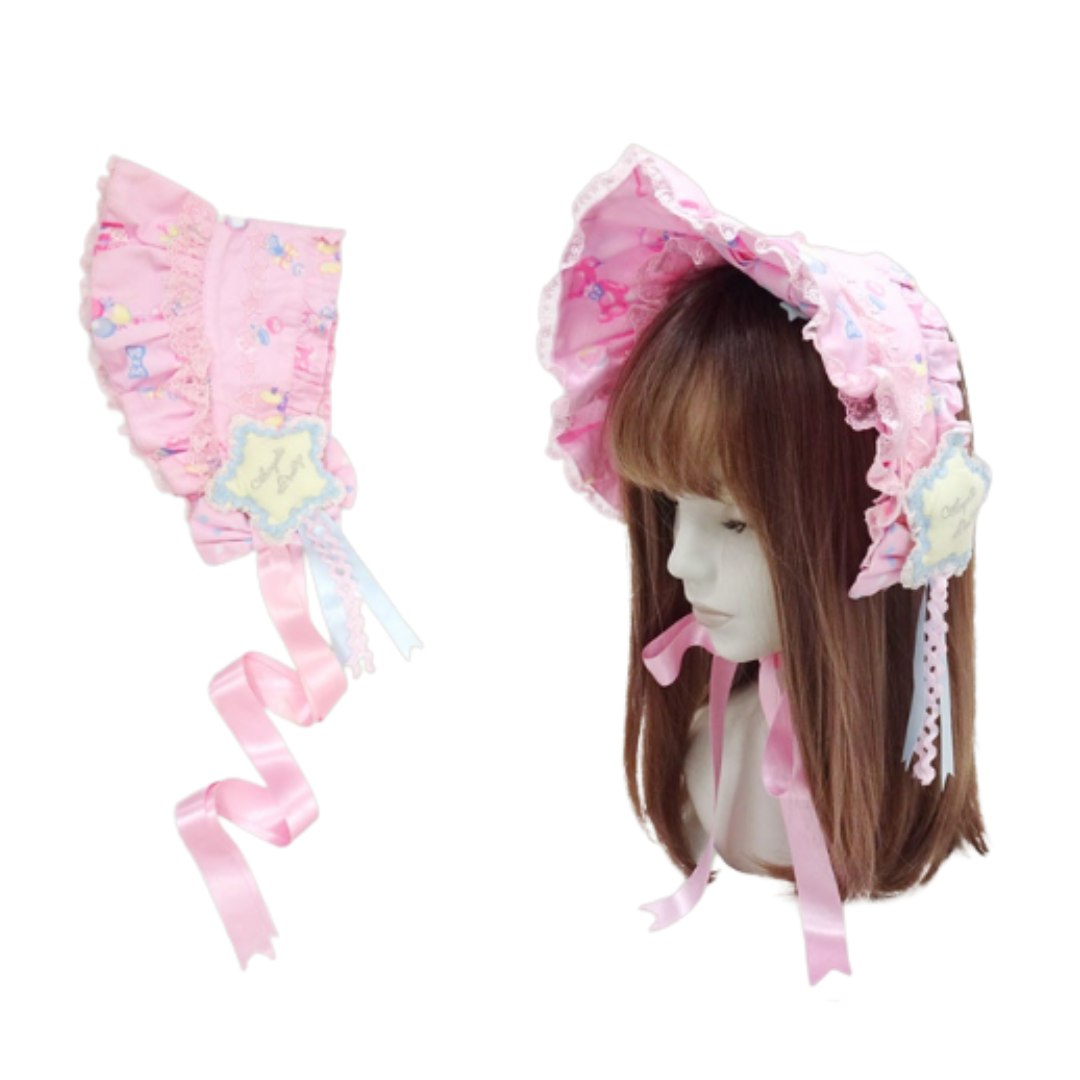
- 14. Mini Hats
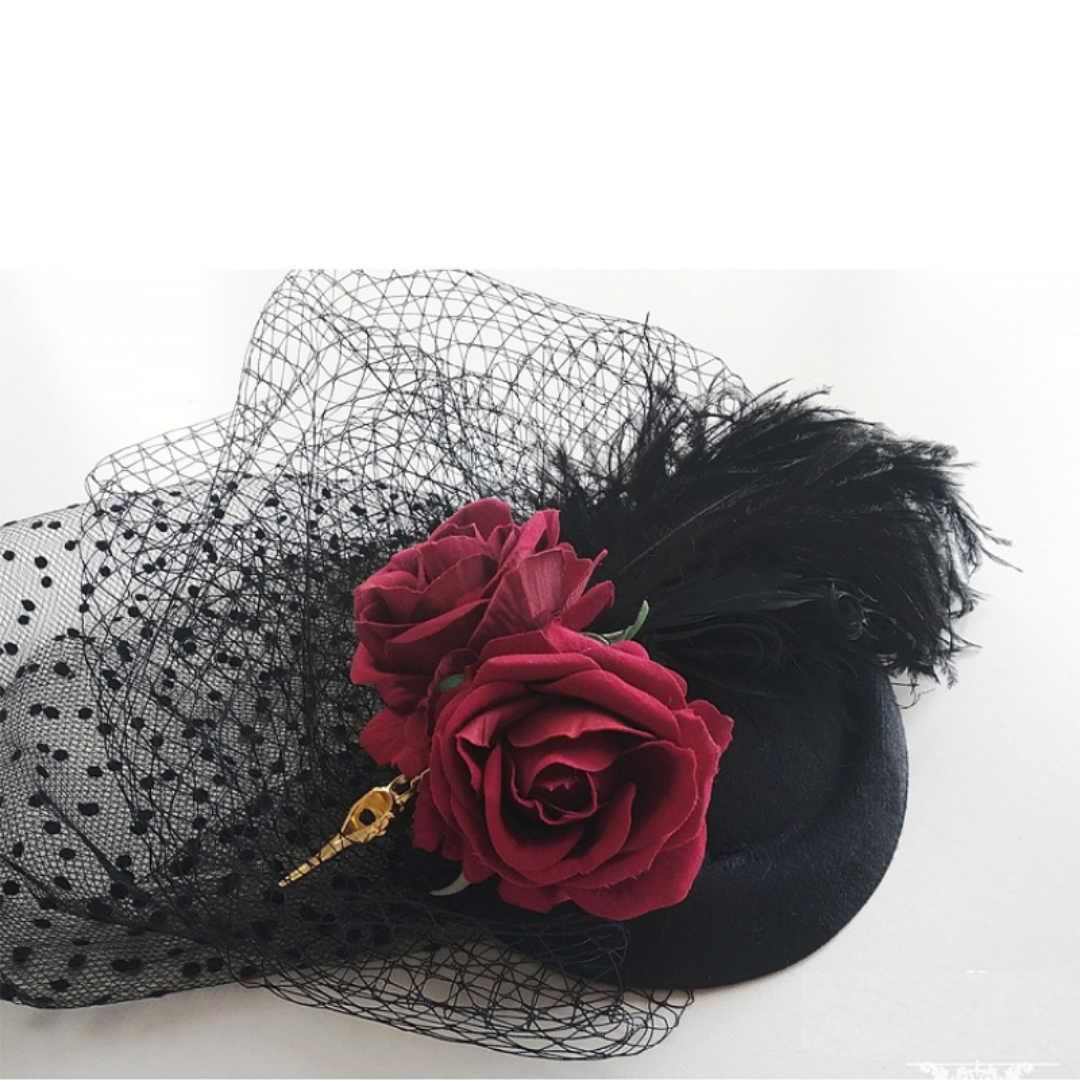
- 15. Berets
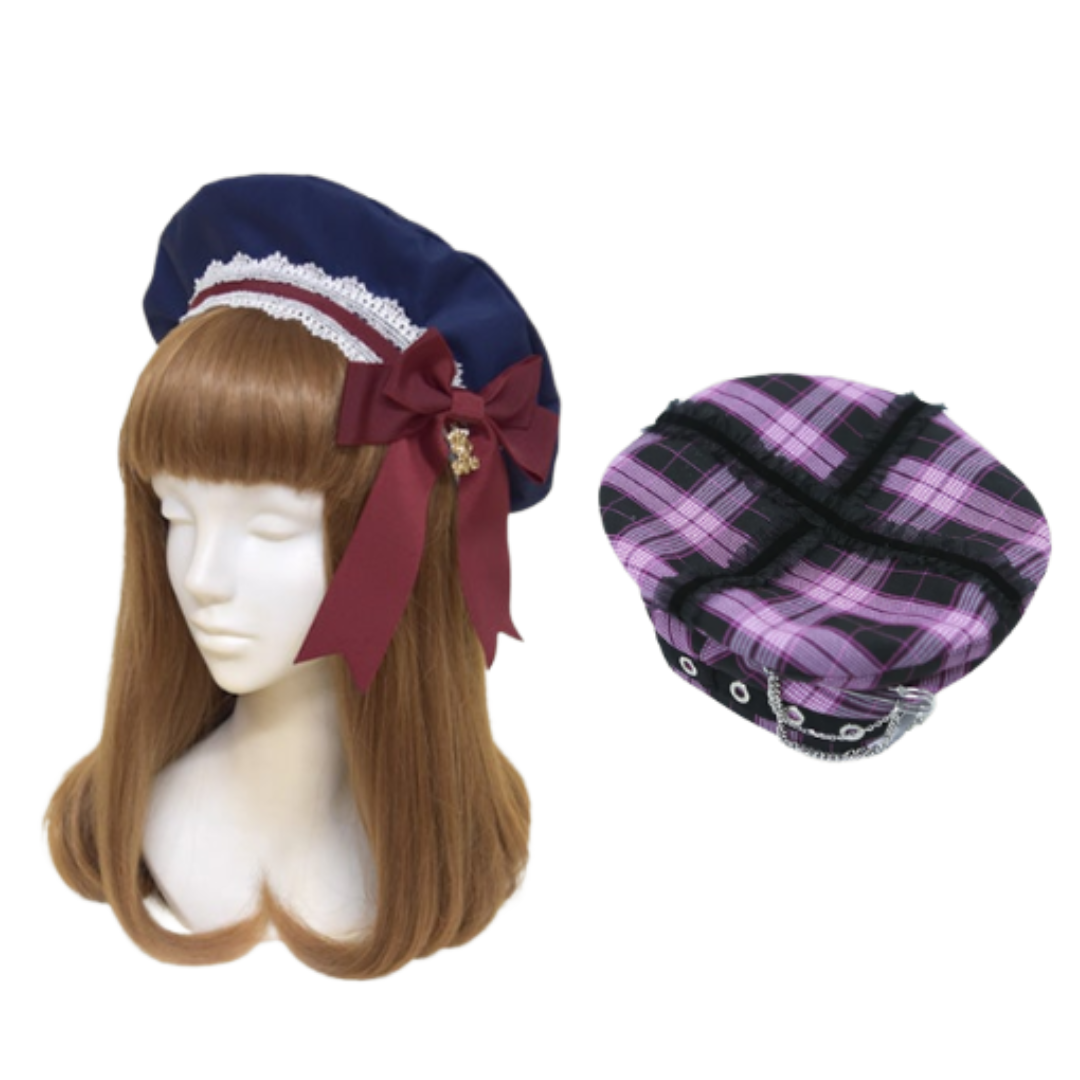
- 12. Straw Hats
▪ Cutsew — Short for "cut and sewn". A more tailored T-shirt was sewn using a serger which cuts and sews the material at the same time, which is usually covered with loliable motif prints. It's usually made from jerseys, a super-comfortable knit fabric.
▪ Blouse — Usually paired with a JSK or SK. Peter Pan collars and puffed long or short sleeves (sometimes detachable) are the most common features.
Lace, frills, brooches, jabots, bows, special-shaped buttons, embroidery, pearls, and sometimes other decorations can be found on a Lolita blouse.
▪ Blog: 25 Best Lolita Innerwear Brands For Lolita Newbies
▪ Bolero — A tailored waist-length top with an open front and long sleeves to cover the arms, shoulders, and back. Usually paired with a JSK. Bolero is similar to a bullfight jacket but with an elegant style,
▪ Shrug — A cropped, tight-fitting cardigan-like garment only covers the arms, shoulders, and upper back. not commonly seen in Lolita Fashion.
▪ Cardigan — A knitted garment with a front opening with buttons to cover your entire upper body. Usually used in winter lolita coordination
▪ Common Lolita Accessories: Lace gloves, fake/detachable collars, wrist cuffs, aprons, brooches, chokers, necklaces, bowties, and seasonal accessories including scarves, shawls, mittens, and muffs.
▪ 3 Main Lolita Legwear: Over the Knees(OTKs), Knee Highs, and Tights
▪ Blog: Lolita Legwear Shop Guide For Lolita Newbies
▪ Socks v.s. Stockings
▪ Socks — Cover the ankle or some part of the calf;
Types of Socks:
No-show Socks/Low Cut, Ankle Socks, Crew Socks(reach to the small part of the calf), Mid Calf Socks,
Knee-high Socks (Under-the-knee Socks), Loose Socks, Tabi (Traditional Japanese socks), etc.

In the 20th century, as women's skirts became shorter, socks evolved into thigh-length transparent coverings held up with a (Br.) suspender belt or (Am.) garter belt.
▪ Stockings — Cover from feet to the middle or upper area of the thigh;
Types of Stockings:
Thigh-high Stockings(Am.) or Stay-ups(Br.)/Hold-ups(Br.), Suspender/Garter Stockings, Over-the-Knee Stockings
▪ Pantyhose v.s. Tights
Pantyhose and Tights both cover the area from the waist down to the end of the toes.
▪ Pantyhose (Am.) — Under 40 denier, Also known as Nylons/Sheer Tights
▪ Tights (Br.) — Above 40 denier; A close-fitting opaque covering
Tights are thicker than pantyhose and better for cold weather.
Leggings, or yoga pants, are similar to tights but don't cover the feet, leggings are now referred to as fashionable casual wear for women
▪ Leg warmers — Coverings for the lower legs, similar to socks but thicker and generally footless. Leg warmers are worn to keep the lower legs warm in colder weather.
▪ Loose Socks — A style of baggy sock worn by Japanese high school girls, as part of Kogal("schoolgirls") culture or Fairy Kei.
Loose socks were adopted as a fashion that flattered plump calves and also expressed rebellious deviation from Japan's strict dress code for school uniforms.
▪ Tabi Socks — Traditional Japanese socks were worn with thonged footwear such as Zori, dating back to the 15th century.
▪ Mary Janes — Also known as bar shoes or doll shoes. A closed, low-heeled flatform shoe with rounded toes, and one or more straps across the instep.
▪ Tea Party Shoes —Flat shoes first released by Anglic Pretty, it has a low, almost flat heel, straps across the top, a buckle ankle strap, and a front bow.
▪ Blog: 4 Common Lolita Shoe Types to Complete Your Lolita Wardrobe
▪ Types of Shoe Finishes:
▪ Suede Finish — A type of leather with the flesh side rubbed to make a velvety nap. Often be seen in suede shoes.
▪ Matte Finish— A matte finish doesn't reflect much light and has a low gloss percentage.
▪ Glossy Finish — Glossy finishes reflect light and give off a shiny, protective sheen.
▪ Satin Finish — Satin Finish will offer a surface or color between matte finish and glossy finish. It will offer just the slightest sheen but is a bit glossier than matte. Often described as silky or velvety. Durable and easy to clean and commonly seen in satin shoes.
▪ Patent Leather — A type of coated leather that has a high-gloss finish. Usually seen in Mary Janes.
▪ Common Platform Shoes: Rocking Horse shoes, platform boots, platform Oxford shoes, creepers.
▪ Common Collar Types in Lolita Fashion: Peter Pan Collar, Mandarin Collar/Cheongsam Collar/Standup Collar, Turndown Collar/Rolled Collar, Sailor Collar, Ruffle Collar, High Neck Collar, Jabot Collar, Cascade Collar, Bertha Collar, Lapel Collar/Jacket Collar/ Coat Collar, and so on.
▪ Blog: 10 Most Popular Types of Collar in Lolita Fashion
▪ Common Sleeve Types in Lolita Fashion: Puffed Sleeve, Ballon Sleeve, Lantern Sleeve, Trumpet Sleeve/Hime Sleeve/Bell Sleeve, Leg-of-mutton Sleeve, Bishop Sleeve, Virago Sleeve(Multi-section Sleeve), Off-shoulder Sleeve, One Shoulder Sleeve, Open Shoulder/Cut-out/Cold-shouldered Sleeve, Japanese Traditional Kimono Sleeve, and so on.
▪ Blog: 10 Sleeve Designs in Lolita Dresses and Blouses
▪ Fabrics could be made from: Natural Fiber including cotton, linen, wool, and silk; Synthetic Fiber includes polyester(terylene), Nylon(Polyamide/Chinlon), Spandex (Lycra/Elastane), and Acrylic fiber(Orlon); Regenerated Cellulose Fiber like Rayon.
▪ Blog: What and How Does the Fabric of Lolita Garments Consist?
▪ Fabric could be Woven Fabric or Knitted Fabric.
Types of woven fabric include plain weave, twell weave, satin weave, Jacquard weave, and so on.
Types of knitted woven include wrapped-kitted(produces a coarser surface) and weft-knitted(a common type of knitting).
▪ Common Fabric Types in Lolita Fashion: Gingham, Chiffon, Crepe, Organza, Herringbone, Tartan(Plaid), Slub(usually cotton and hemp/linen blends), Elastic Cloth/Strech Cloth, Cotton Jacquard, Jersey Knit, Velvet, Corduroy, Denim, Chino(twill fabric), Houndstooth, Satin, Canvas, Tweed, Flannel, Lace, and so on.
▪ Blog: 20 Fabrics You Should Know in Lolita Fashion Market
⚑ Kawaii Fashion
▪ J-fashion — Japanese Fashion
▪ Kawaii — Meaning "cute" in Japanese
▪ Kei — Meaning "styles" or "groups" in Japanese
▪ Blog: 8 Kinds of Casual Kawaii Clothing You Must Try This Summer
▪ Harajuku — Harajuku (原宿) is a district of Shibuya(涩谷), Tokyo(东京); Harajuku is well-known for its "rebellious and cool" youth culture and fashion and is called "Tokyo's Chic Capital". This district has a famous shopping walk street which is the birthplace of most Japanese Street Fashion
▪ Harajuku Fashion — Including Lolita Fashion, Decora Kei, Fairy Kei, Mori(forest-style) Kei, Visual Kei, Gyaru(hot girl) Kei, JK Uniforms, and so on.
▪ Otome Kei — A Japanese maiden-like fashion and a lifestyle based around traditional girls' hobbies. It originated in the late 1970s and is often referred to as one of the predecessors of the Lolita fashion.
▪ Blog: What is Otome Kei?
▪ Otome (乙女) means "maiden" in Japanese, but this meaning was diluted over the years due to its association with female otaku culture. Otome now refers to a girl who is obsessed with anime or manga.
▪ Otaku — Otaku(御宅) is a term used to describe people who are obsessed with something, such as anime, manga, or video games.
▪ Shojo Manga — Shōjo manga (少女漫画), also romanized as shojo or shoujo, are Japanese comics aimed at a teen female target-demographic readership. The name romanizes the word Shōjo(少女), literally meaning "young woman".
▪ Decora — "Decora (デコラ)" comes from the word "decorative," and like most street fashion styles, it is now considered one of the Japanese subcultures/aesthetics.
▪ Decora Kei — A kind of Kawaii aesthetic/fashion. A Japanese youth street fashion that features an excessive amount of decoration like many hairclips on bangs and tons of plastic accessories, layers of clothing in bright and loud colors, cartoon tops with prints that are inspired by 80s cartoon characters, and other childlike accessories. Around the 1980s, teens used this kind of street fashion to break order and discipline and make life more fun and livable for them.
▪ Blog: What is Decora Kei?
▪ Decoden — Decoden (デコデン) is a term from the Japanese language and it means to decorate a mobile case! The first series of decoden are generally decorated with crystals & rhinestones and they call it a "bling-bling case". Today, it can refer to anything over-the-top decorated with cabochons. It's an important part of Japan's Kawaii (cute) culture.
▪ Fairy Kei — Evolved from Decora Kei. A kind of dreamy aesthetic. A super-kawaii look with cute-and-colorful pastel styles accessorized with 80's cartoon toys and nostalgic prints.
▪ Blog: The Top 9 Knowlege of Fairy Kei
▪ Two Branches of Fairy Kei — Yume Kawaii and Yami Kawaii
▪ Yumi Kawaii — A girly, pastel, dreamy aesthetic. Yume means "dream" and Kawaii means "cute" in Japanese. The concept of Yume Kawaii is to describe a cute single that is tired of life and full of fantasy at the same time. It's similar to Fairy Kei which uses pastel colors as the main tone but Yume Kawaii uses more fairytale elements like flying horses, unicorns, starry stars, angel wings, candy, and magical girls.
▪ Yami Kawaii — A sick-cute aesthetic that was derived from Yume Kawaii. Yami(病み) means "sick" or "mentally anguished" in Japanese and is used to refer to mental health issues and darker themes. Yami Kawaii is a way to incorporate slight darkness into your outfit, as lovely as it may seem. Yami Kawaii would have medical accessories and slightly depressing elements that oppose Kawaii.
▪ JK Uniform — A daily basis as a Kawaii casual outfit, which usually includes a cute plaid or pleated skirt(normally high-waisted) and a short shirt with a bowtie that matches the skirt.
▪ Blog: Everything About JK Uniforms
▪ JK —Short for "Joshi Koukousei(女子高中生)” which means female high school students. The JK uniform is the uniform that Japanese girls must wear every day in school.
▪ Types of JK Uniforms — Sailor Fuku and Blazer-style uniforms.
▪ Sailor Fuku — Sailor Fuku (sailor outfit) is a common style of uniform worn by female students in junior high school, high school (at least traditionally), and occasionally elementary school. Sailor Fuku normally contains a sailor fuku top(normally with a sailor collar, or a bowtie) and an adorable pleated skirt(normally high waist).
▪ The blazer-style JK uniform — The blazer-style JK uniform consists of a white blouse, a tie, a blazer or sweater vest with a school crest, and a skirt. The skirt is often a different color from the blazer or sweater vest.
The blazer-style uniform kit is relatively more complex than the sailor uniform; in addition to the basic matching of a blouse and a pleated skirt, there are also bow ties, neck scarves, knee-high socks, mid-thigh socks, short socks, uniform bags, shoulder bags, sports bags, uniform shoes, sports shoes, canvas shoes, and other accessories.
▪ School uniforms in Japan:
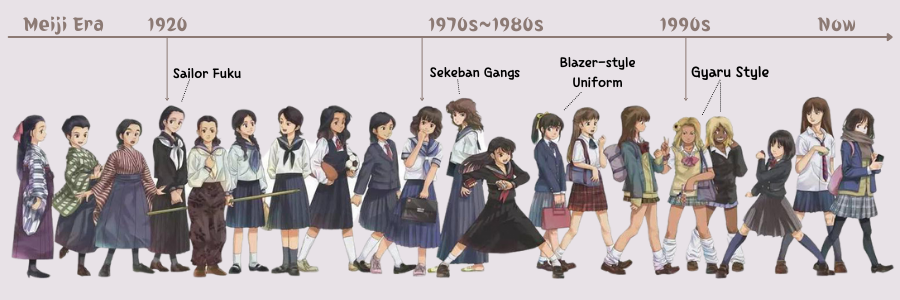
▪ Sukeban — Sukeban means "delinquent girl" in Japanese. It refers to a gang of rebellious girls who used their actions and fashion to protest against societal standards put on girls. Schoolgirls from Sukeban modified their school uniforms by making skirts longer and shortening the tops as a protest against the sexual revolution and the sexualization of the Japanese schoolgirl uniforms.
▪ Gyaru — Gyaru is a Japanese fashion subculture. Gyaru(ギャル) means "party girl" in Japanese. It's a Japanese transliteration of the English slang word GAL. Gyaru is considered to be a nonconformist style rebelling against Japanese societal norms and notions of beauty at a time when women were expected to be housewives and to fit certain Asian beauty standards such as having pale skin and dark hair.
▪ Common Look of a Gyaru:
In the 1990s, the popular musician Namie Amuro (安室奈美惠) brought on the peak of the Gyaru fashion trend. At that time, a high school girl with long brown hair, dark skin, a mini skirt, and loose bubble socks was a common sighting on the Shibuya (涩谷) shopping street.
Later, the new Gyaru style with white skin and light blonde hair represented by singer Ayumi Hamasaki (浜崎あゆみ) became popular, and it also gained considerable popularity in other countries.
▪ Y2K — Y2K means "the year 2000". It's an aesthetic that is retro-futuristic with an optimistic and techno-utopian spirit. This aesthetic was named after "The year 2000 problem".
▪ Blog: Back To The 2000s: Y2K Aesthetic, A Sweet and Optimistic Spice Girl Style
▪ Jirai Kei — Jirai Kei(地雷系) is a currently trending "dark girly" fashion in TikTok. It can be literally translated into "landmine type/style." It's a very cute, girly, and feminine fashion style but with a little bit dark aesthetic.
▪ Blog: What is Jirai Kei?
▪ Mori Kei — Mori Kei, first known as Mori Girl (森ガール), is a "forest-style" Japanese street fashion that originated in Harajuku. Mori(森) means "forest" and Kei(系) means "styles" in Japanese. Mori Kei is a romantic forest fashion that centers on a look of a girl who lives in the European forest.
▪ Blog: 7 Useful Knowledge To Know About Mori Kei
▪ Sanrio —Sanrio Company, Ltd. is a Japanese company that creates a range of (mostly) design series that features characters; and sells and licenses various products branded with these characters. These products include stationery, school supplies, gifts, and accessories. Sanrio's best-known character is Hello Kitty. Hello Kitty is one of the most successful marketing brands in the world.
▪ Blog: 9 Popular Sanrio Characters You Should Know
▪ Popular Sanrio Characters:
Hello Kitty — A white cat with a red bow and no mouth.
Birthplace: The suburbs of London, England
Birthday: on November 1st, 1974
Trademark signature: A red bow on her left ear.
My Melody — A white rabbit. Hello Kitty's best friend.
Birthplace: The magical forest of Mariland located in London
Birthday: on January 18th, 1975
Trademark signature: Inspired by Little Red Riding Hood. She wears a red (or pink) hood that covers her ears, often having a bow or a flower on her right side.
Little Twin Stars — The little brother is called Kiki while the elder sister is called Lala.
Birthplace: on Omoiyari Star in the Dream Star-Cloud
Birthday: on December 24, 1975
Trademark signature: Kiki has blue hair, while Lala has pink hair (sometimes, Kiki's hair is brown, while Lala's hair is blonde).
Keroppi — A frog with big eyes and a V-shaped mouth. The family name "Hasunoue" means "on lotus" in Japanese.
Birthplace: in Donut Pond
Birthday: July 10th,1988
Trademark signature: Big eyes and a V-shaped mouth
Pochacco — A white dog with black floppy ears, but no visible mouth.
Birthplace: Brazil or Nightingale Lane
Birthday: February 29th (Born in a leap year),1989
Trademark signature: He is often dressed in athletic attire, as he has a sporty and playful personality.
Pompompurin — Or Pudding Dog. A good-natured Golden Retriever dog.
Birthplace: Unknown. He lives in his own basket in the entrance hall of his sister's owner's house
Birthday: on a sunny day on April 16th, 1996
Trademark signature: His brown beret that is always on top of his head
Cinnamoroll — A little chubby male dog with white fur, blue eyes, pink cheeks, a plump and curly tail that resembles a cinnamon roll, and long ears that enable him to fly.
Birthplace: A cloud far up in the sky
Birthday: on March 6, 2001
Trademark signature: A plump, curly tail and long ears
Kuromi — A white rabbit wearing a black jester's hat with a pink skull on the front and a black devil's tail. My Melody's rival. Her name translates from Japanese to English as "chrome."
Birthplace: Unknown
Birthday: Halloween (October 31st), 2005
Trademark signature: The "punk" tomboy counterpart to My Melody. A popular character in the punk, scene, and goth crowds due to her appearance.
Sugarbunnies — Kurousa (Brown Bunny) and Shirousa (White Bunny) are a pair of rabbit siblings. Shirousa is the older brother, while Kurousa is the younger brother.
Birthplace: Unknown. Both bunnies live in Bunniesfield and enjoy making sweets.
Birthday: on May 26th, 2004
Trademark signature: Brown fur; Pink ear linings (Kurousa) White fur; Pink bow; Pink ear linings (Shirousa)





